CPC Definition - Subclass H04S
This place covers:
Signal processing or circuitry for two or more channel sound reproduction, using loudspeakers or headphones, or for two or more channel sound capture, using microphones.
Concerning G10L 19/008, this group covers in principle coding, processing in the coded state, and decoding of stereophonic audio signals for redundancy reduction, whereas processing of stereophonic audio signals in the decoded stated, i.e. before coding (e.g. sound capturing) or after decoding (e.g. sound rendering) is covered by H04S.
Examples of places where the subject matter of this place is covered when specially adapted, used for a particular purpose, or incorporated in a larger system:
Multi-channel audio coding and decoding using interchannel correlation to reduce redundancies | |
Circuits or components specially adapted for stereophonic broadcast systems | |
Broadcast systems for the distribution of stereophonic information | |
Circuits or components specially adapted for stereophonic broadcast receiving |
Attention is drawn to the following places, which may be of interest for search:
Speech or audio signal analysis-synthesis techniques for redundancy reduction, e.g. in vocoders; Coding or decoding of speech or audio signals, e.g. for compression or expansion, source-filter models or psychoacoustic analysis | |
Information storage on discs or tapes | |
Low frequency amplifiers, e.g. audio preamplifiers | |
Power amplifiers using a combination of several semiconductor amplifiers | |
Combinations of amplifiers using coupling networks with distributed constants | |
Combinations of amplifiers, e.g. multi-channel amplifiers for stereophonics | |
Remote control of amplification, tone, or bandwidth | |
Gain control | |
Tone control and equalizers | |
Compression or expansion | |
Combination of types of control | |
Multiplex systems in general | |
Stereophonic arrangements of loudspeakers, microphones or headphones |
- Classification of invention information and additional information is obligatory.
- The subgroups of Indexing Code groups H04S 2400/00 and H04S 2420/00 should be used to classify information relevant for the invention, although it need not be invention information. Indexing Code symbols H04S 2400/00 and H04S 2420/00 themselves should not be used for classification.
- Further detail not provided for in any of the main groups is provided for in Indexing Code groups H04S 2400/09, H04S 2400/15, H04S 2420/01, H04S 2420/03, H04S 2420/05, H04S 2420/07 and H04R 2499/13. Classification is obligatory.
In this place, the following terms or expressions are used with the meaning indicated:
Stereophonic system | two or more channel system, e.g. quadraphonic, ambisonic or similar systems |
Multi-channel system | three- or more channel system |
This place covers:
Electronic sound processing in two-channel systems wherein the processing itself is independent on the input signal or its properties.
This place does not cover:
Multi-channel, i.e. more than two input channels, sound reproduction with two speakers wherein the multi-channel information is substantially preserved is not to be classified under H04S 1/00 but under H04S 3/00, H04S 5/00 or H04S 7/00 using the Indexing Code H04S 2400/01.
Classification is obligatory.
This place covers:
Electronic sound processing for enhancing the sound image or the spatial distribution, wherein the processing itself is static or manually adjustable (e.g. Figure below).
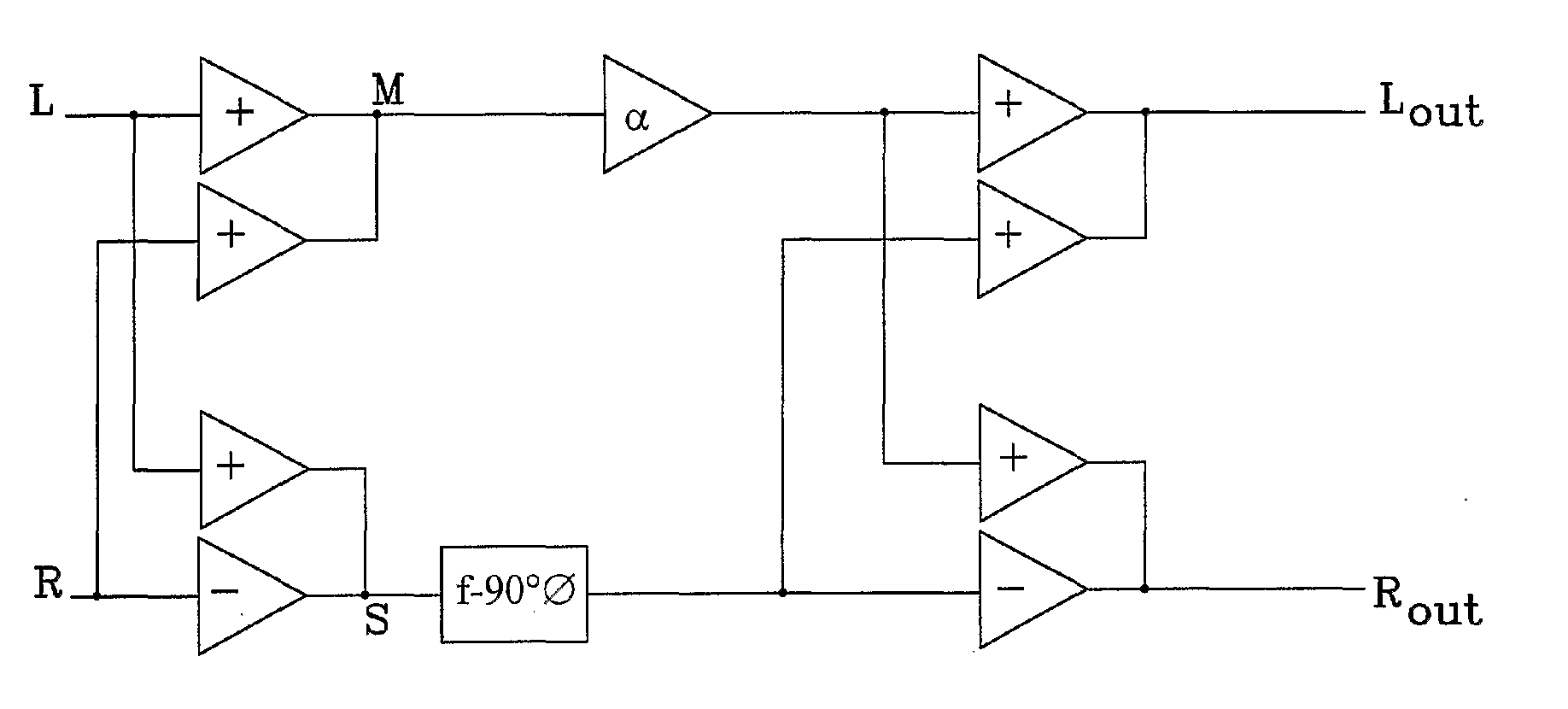
\
This place does not cover:
Control circuits for electronic adaptation of the sound field, i.e. electronic sound processing adaptable in dependence of calibration signals, sensor signals or parameters for sound field or sound object description, e.g. by using an adaptive circuit, a look-up table or orientation sensors, for changing the sound field, e.g. the spatial distribution |
This place does not cover:
Data reduction aspects of digital stereo signals based on psychoacoustics |
This place covers:
Electronic sound processing in systems employing more than two channels wherein the processing itself is independent on the input signal or its properties.
This place does not cover:
Further detail is covered by Indexing Code groups H04R 2203/12, H04S 2400/01, H04S 2400/03, H04S 2400/05, H04S 2420/11 and H04S 2420/13. Classification is obligatory.
This place covers:
Electronic sound processing for enhancing the sound image or the spatial distribution, wherein the processing itself is static or manually adjustable (e.g. Figure below).
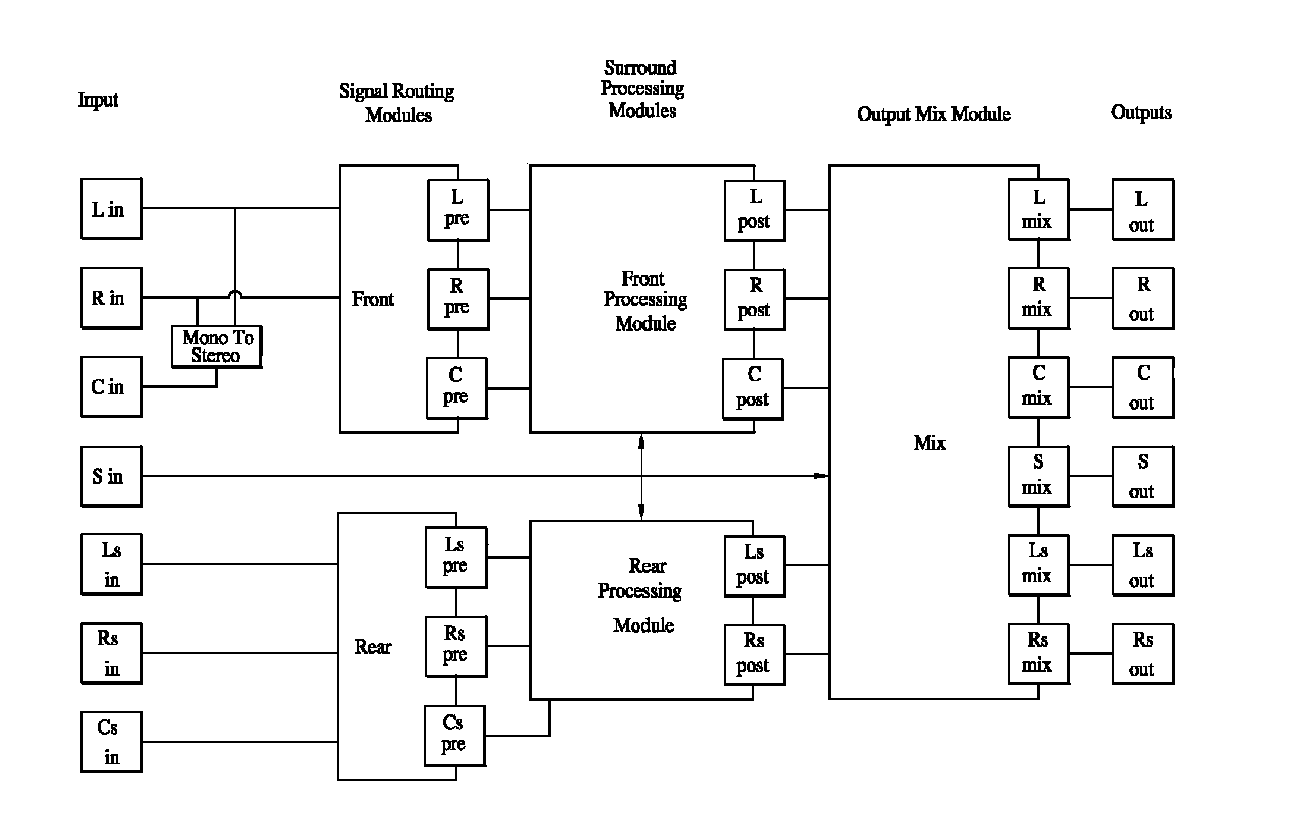
This place does not cover:
Control circuits for electronic adaptation of the sound field, i.e. electronic sound processing adaptable in dependence of calibration signals, sensor signals or parameters for sound field or sound object description, e.g. by using an adaptive circuit, a look-up table or orientation sensors, for changing the sound field, e.g. the spatial distribution |
Attention is drawn to the following places, which may be of interest for search:
For broadcasting |
This place covers:
Spatial sound processing employing more than two discrete digital channels.
This place does not cover:
Data reduction aspects of digital stereo signals based on psychoacoustics |
This place covers:
Using a matrix arrangement that routes multiple input audio signals to multiple outputs.
Typical example:
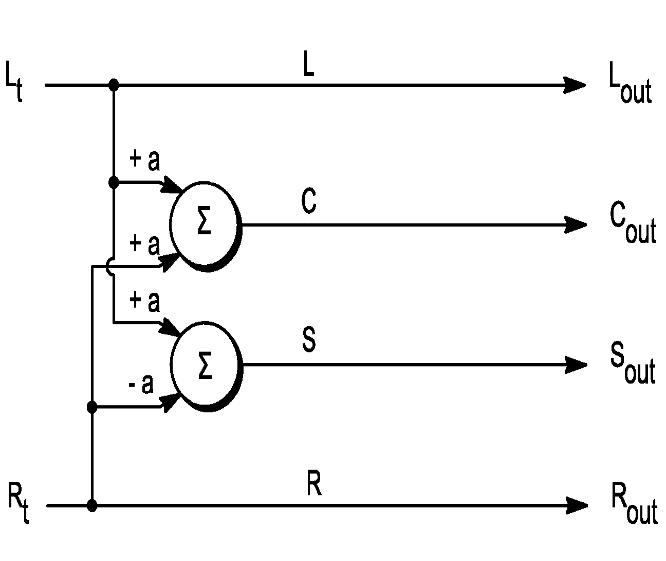
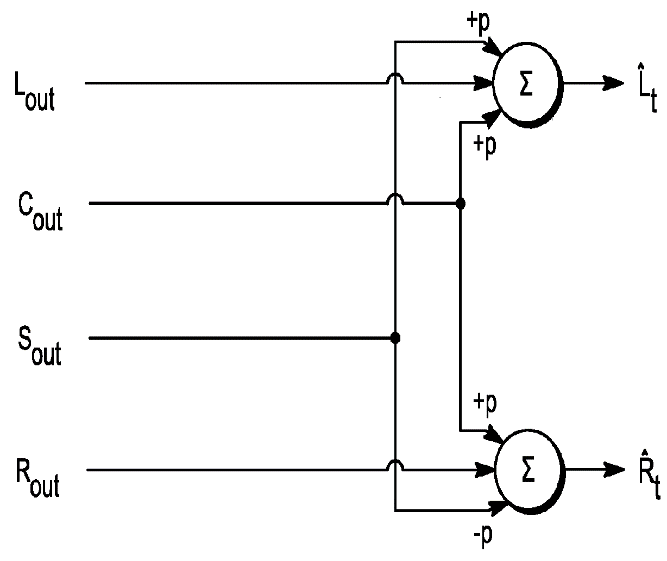
This place covers:
Systems wherein one or more additional channels are generated from one or more of the existing channels to improve the spatial sound reproduction, e.g. wave field synthesis or virtual surround sound, or the spatial sound capture, e.g. 4-channel ambisonic capture to 7.1-channel.
Attention is drawn to the following places, which may be of interest for search:
Directing or focusing sound using electrical steering of transducer arrays, e.g. beam steering | |
Arrangements for producing a reverberation or echo sound |
Further detail is covered by Indexing Code groups H04R 2203/12, H04S 2400/01, H04S 2400/03, H04S 2400/05, H04S 2420/11, and H04S 2420/13.
Classification is obligatory.
This place covers:
Systems wherein more than four additional channels are generated from the existing channels. Example for sound reproduction with two channel stereophonic source signal reproduced over five loudspeaker channels.
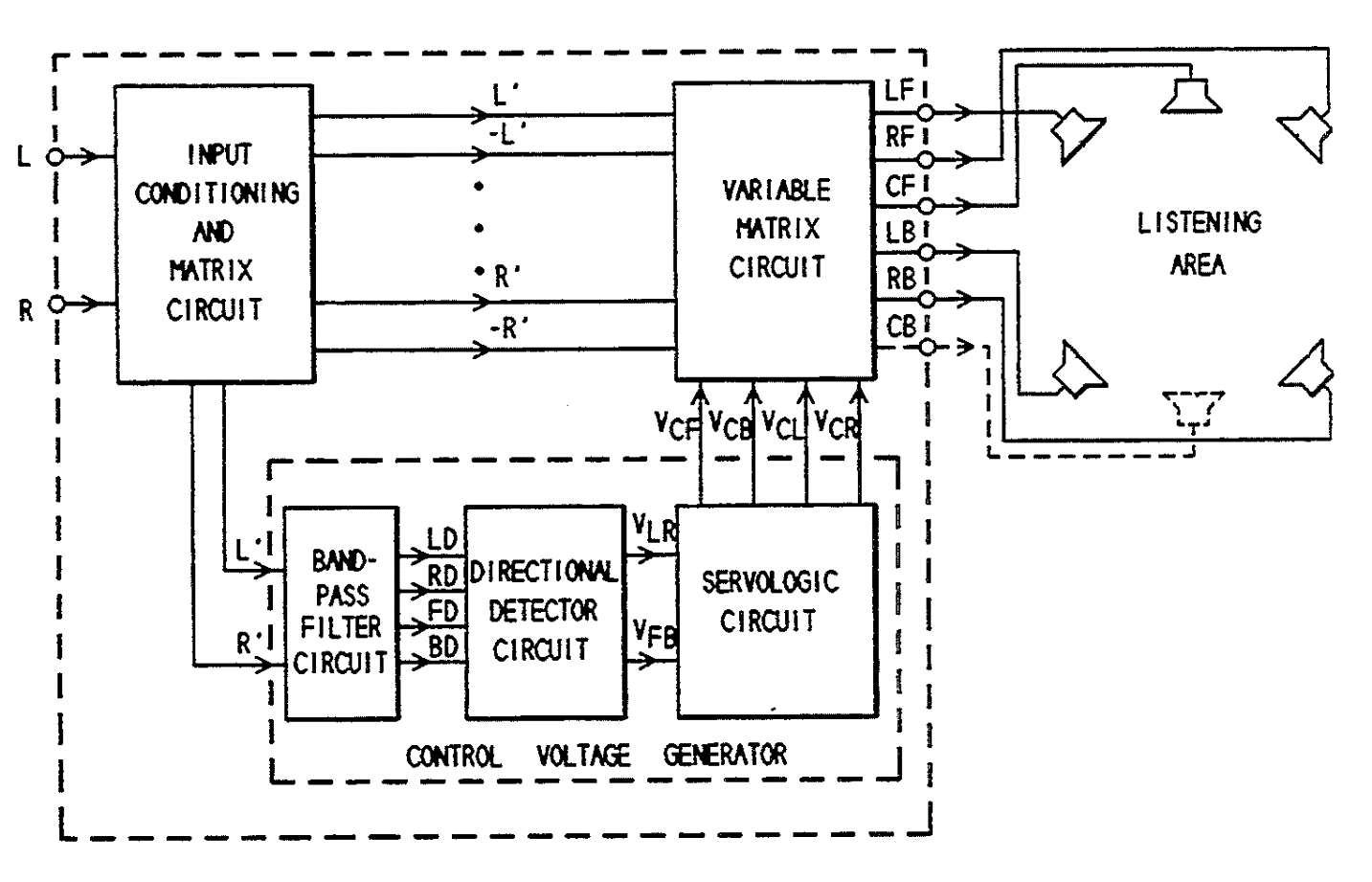
Example for sound capture with input three microphone channels, output five loudspeaker channels, see figure below:
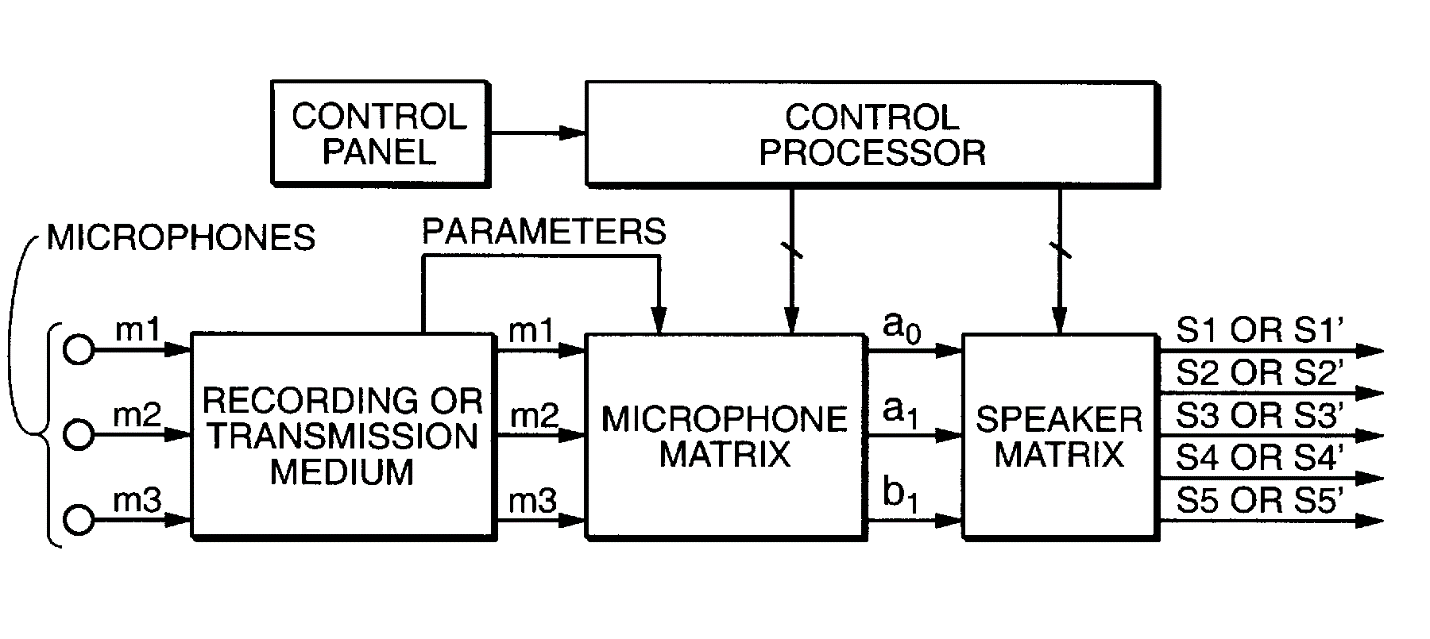
This place covers:
- Sound field processing, i.e. electronic adaptation of the sound field, e.g. automatic set-up, adaptation with respect to listener position, frequency adjustment, reverberation adaptation, sound object positioning.
- Automatic audio format change, e.g. dependent on the input signal.
- Indicating the sound field.
Attention is drawn to the following places, which may be of interest for search:
Non-adaptive circuits, i.e. manually adjustable or static, for signal processing, e.g. enhancing the sound image or thespatial distribution, of for sound capture in stereophonic systems | |
Arrangements for producing a reverberation or an echo sound | |
Tone control circuits in amplifiers per se | |
Circuits for coupling gramophone pick-up, recorder output, or microphone to receiver, e.g. for Hi-Fi systems or audio/video combinations by remote control | |
Circuits for correcting the frequency response of transducers | |
Adaptation of reverberation in public address systems | |
Monitoring or testing arrangements for transducers, loudspeakers, microphones or public address systems; Visual indication of acoustic signal levels |
Further detail is covered by Indexing Code groups H04R 2203/12, H04S 2400/01, H04S 2400/03, H04S 2400/05, H04S 2400/07, H04S 2400/11, H04S 2400/13 and H04S 2420/13.
Classification is obligatory.
In this place, the following terms or expressions are used with the meaning indicated:
Control systems | encompasses adaptive systems |
This place covers:
Electronic sound processing adaptable in dependence of
- calibration signals
- sensor signals,
- parameters for sound field or sound object description, e.g. by using an adaptive circuit, a look-up table or orientation sensors, for changing the sound field, e.g. the spatial distribution (as show in the example), for automatic set-up, adaptation with respect to listener position, frequency adjustment, reverberation adaptation, sound object positioning
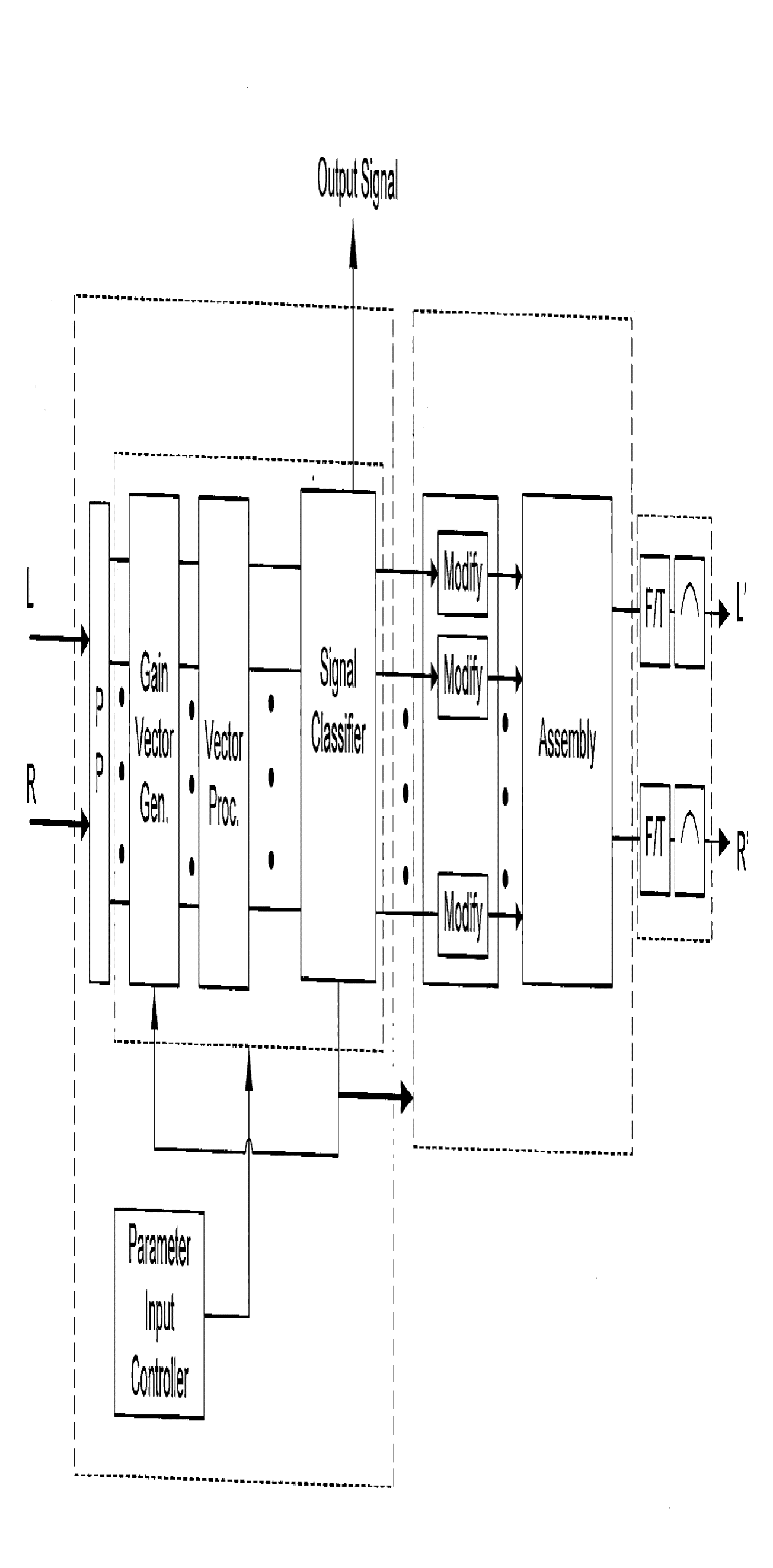
Example for adaptation of the sound field (e.g. shading effects) in dependence of the number and position of passengers in the vehicle. Directionally deviations due to shading is measured. Once measured the sound field is adapted accordingly (see figure).
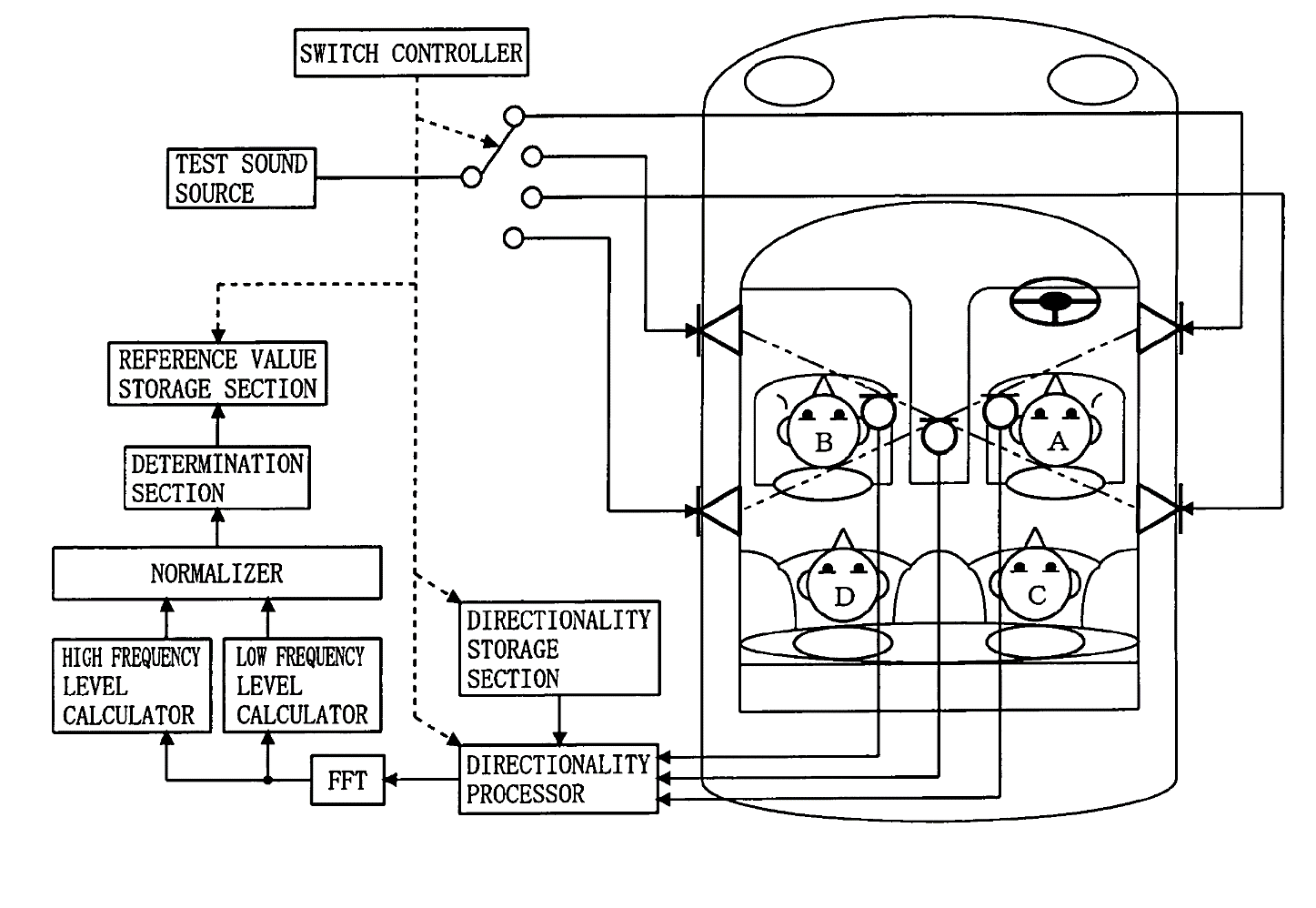
Examples of places where the subject matter of this place is covered when specially adapted, used for a particular purpose, or incorporated in a larger system:
Attention is drawn to the following places, which may be of interest for search:
Non-adaptive circuits, i.e. manually adjustable or static, for enhancing the sound image or the spatial distribution |
This place covers:
Automatic set-up. In the example below calibration is carried out with respect to the relative gains in the listener position by using a test microphone and a noise generator.
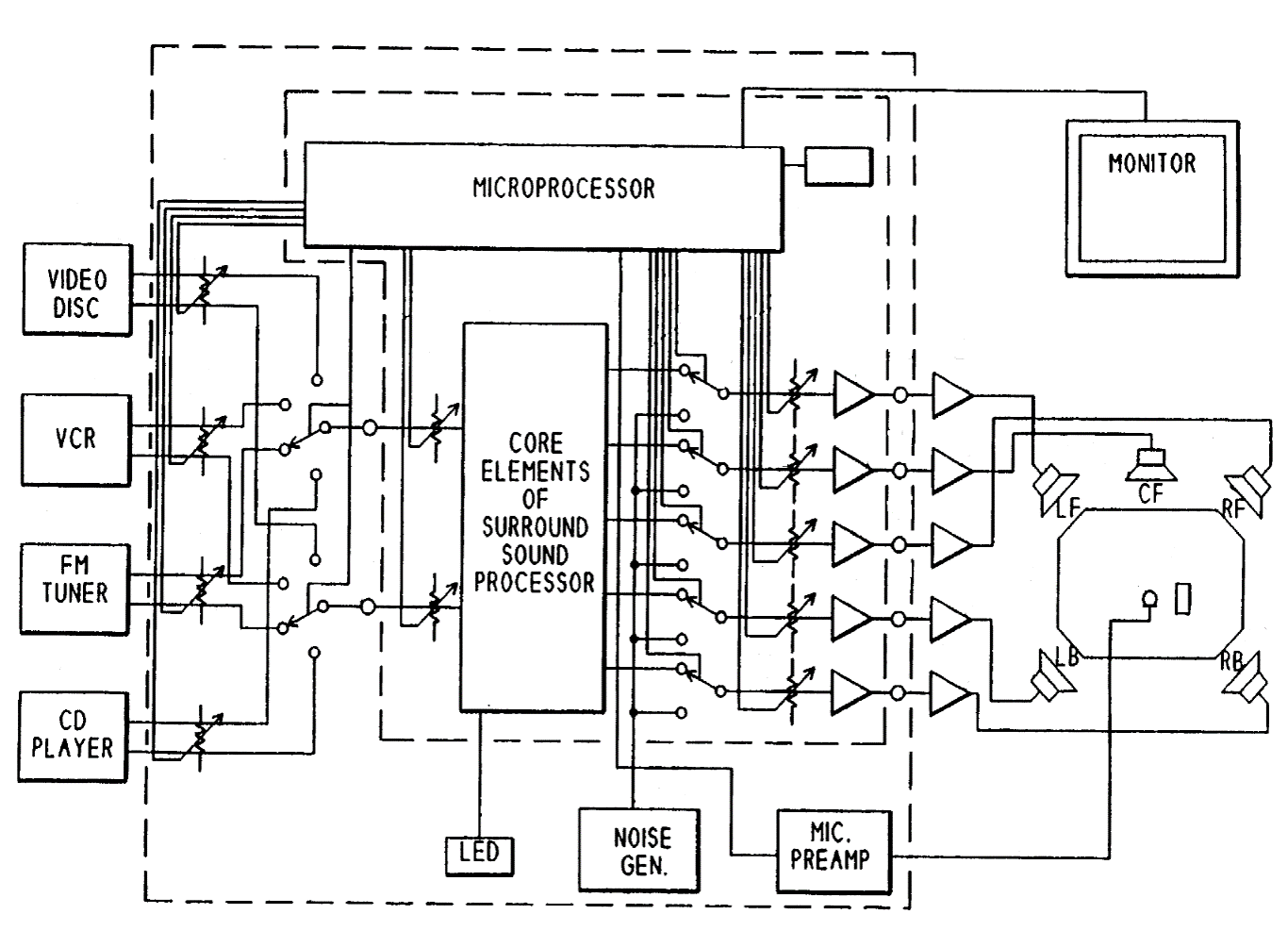
In the example below calibration is carried out with respect to the signal delays in the listener position (12) by a determining the distance between the remote control (14,16) and each loudspeaker using low frequency pulses sent by the control and received by pulse counter (22a-22e) provided with each speaker (20a-20e).
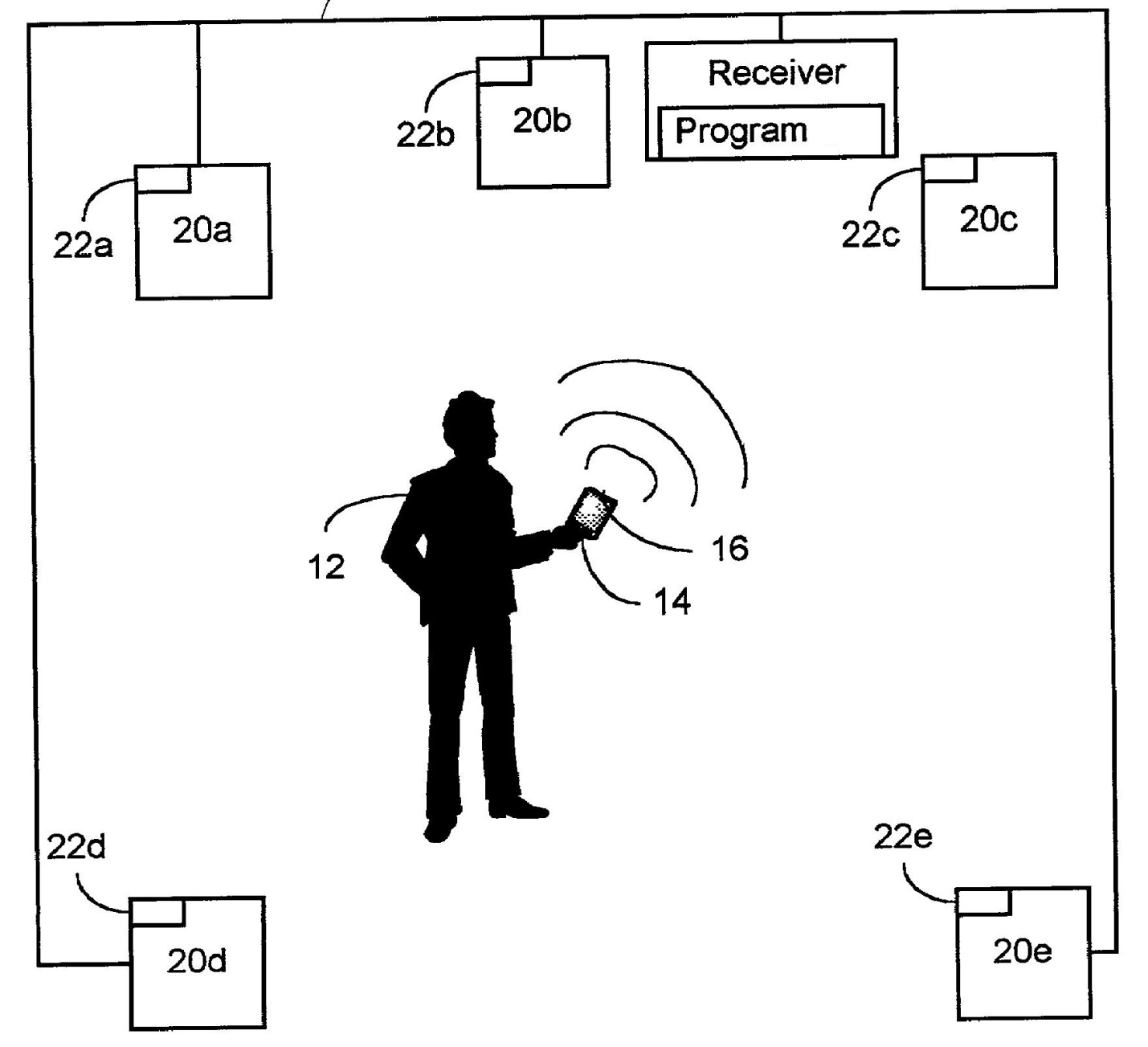
This place covers:
Aspects of adaptation of a sound system with respect to listener position (see figures) or orientation relative to the loudspeakers or virtual sound sources. The calibration can be automatic.
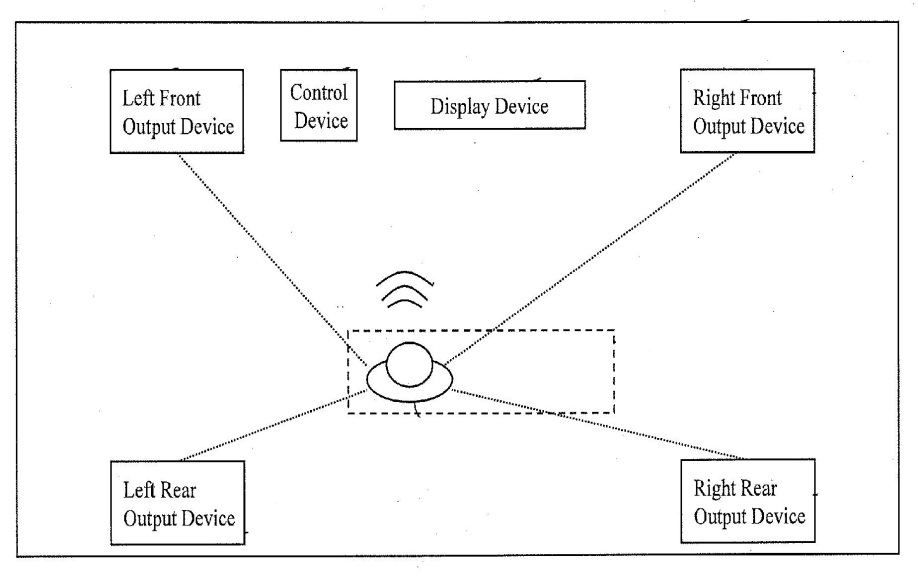
This place does not cover:
Automatic calibration of stereophonic sound system, e.g. with test microphone |
This place covers:
System in which the listener position or orientation (P) is tracked, e.g. with a camera (26a, 26b) (see Figure) and the sound field is adapted accordingly.
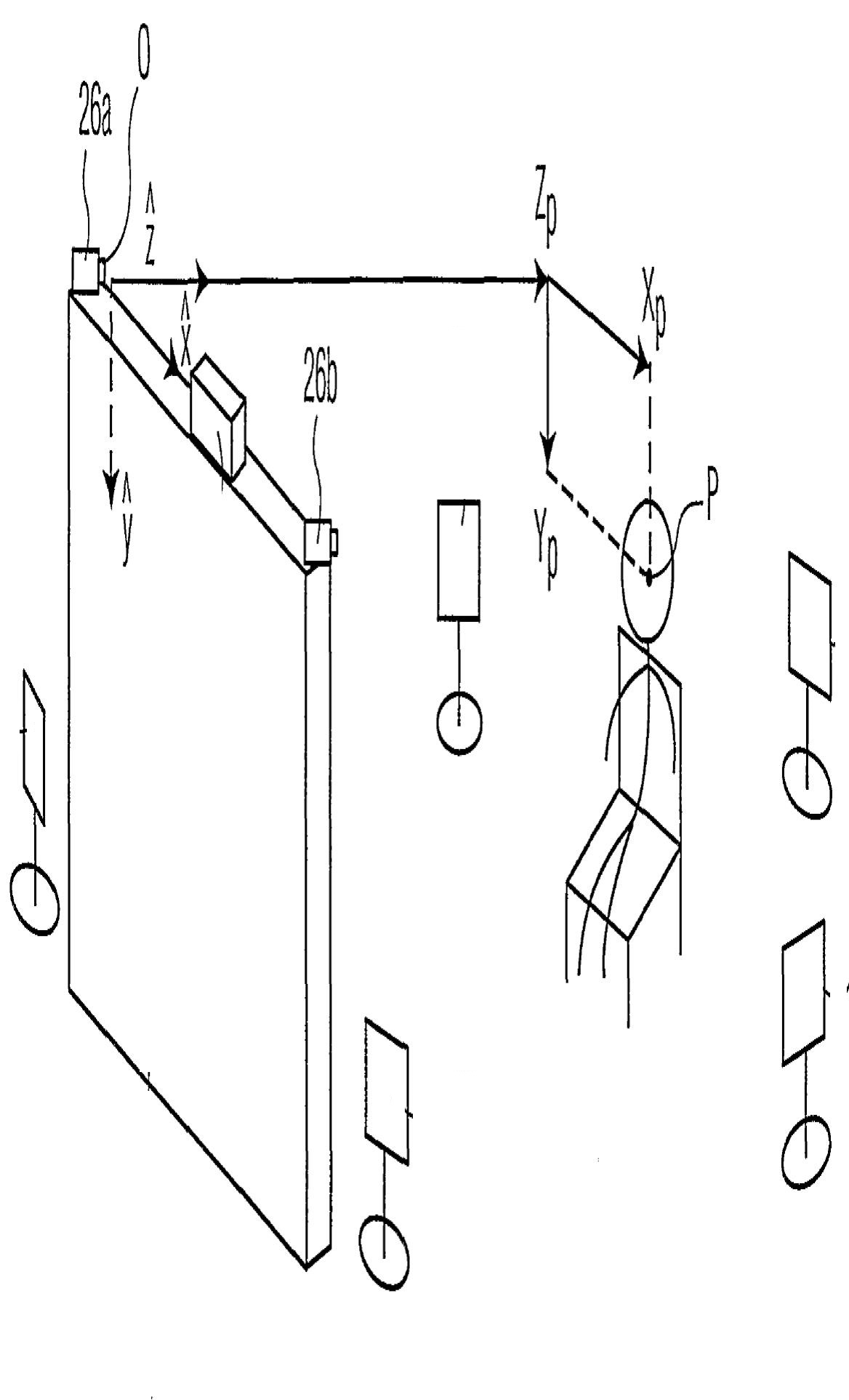
Attention is drawn to the following places, which may be of interest for search:
Head tracking input arrangements for transferring data to be processed into a form capable of being handled by the computer |
This place covers:
System adapted for headphones (61) in which the orientation of the listener head is tracked, e.g. with a rotation angle sensor (71) and the sound delivered to the headphone (6R, 6L) is adapted accordingly (see figure).
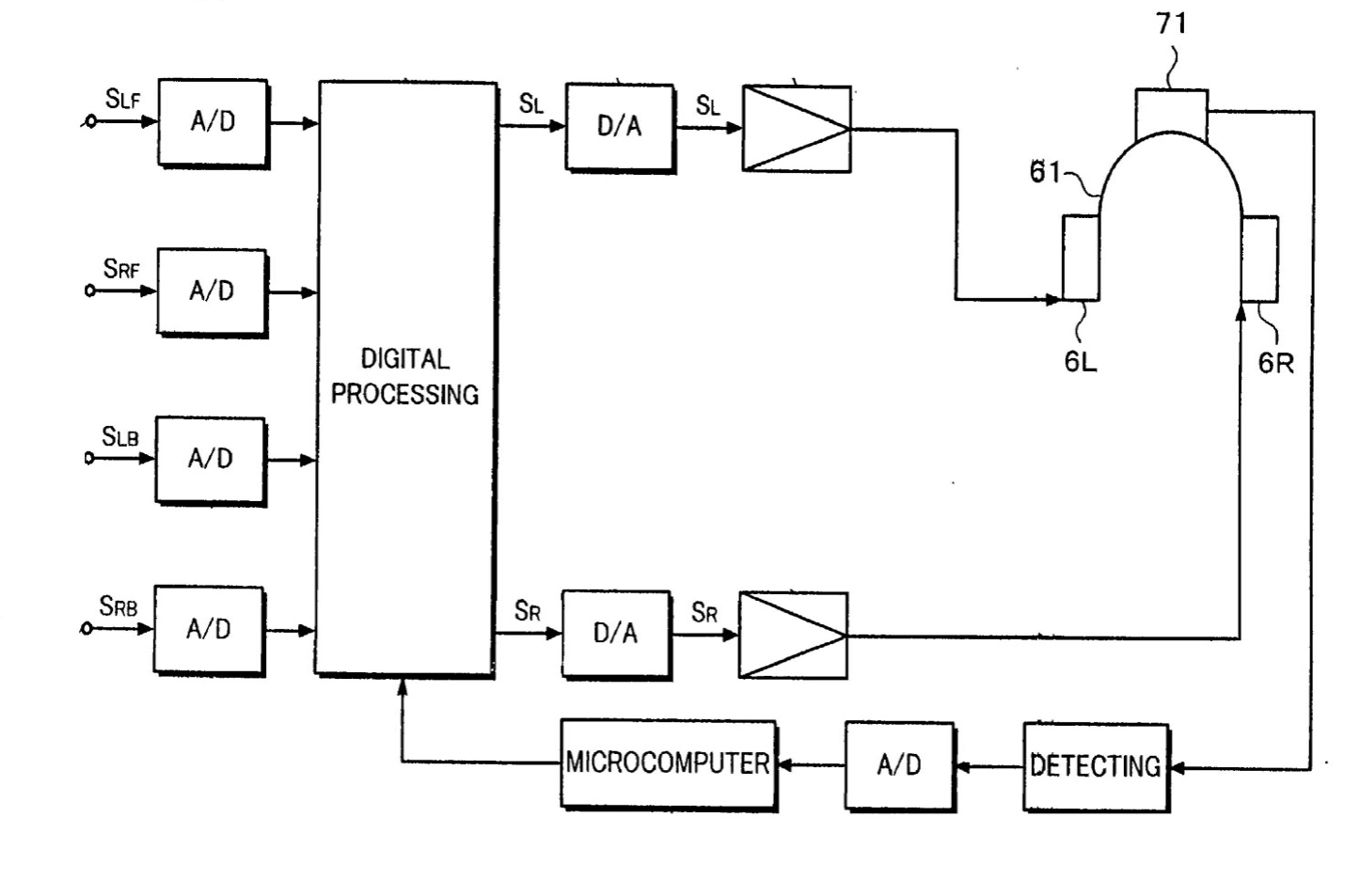
Attention is drawn to the following places, which may be of interest for search:
Head tracking input arrangements for transferring data to be processed into a form capable of being handled by the computer |
This place covers:
Reverberation adaption to the sound field. Example for adaptation of reverberation in a room (see figure).
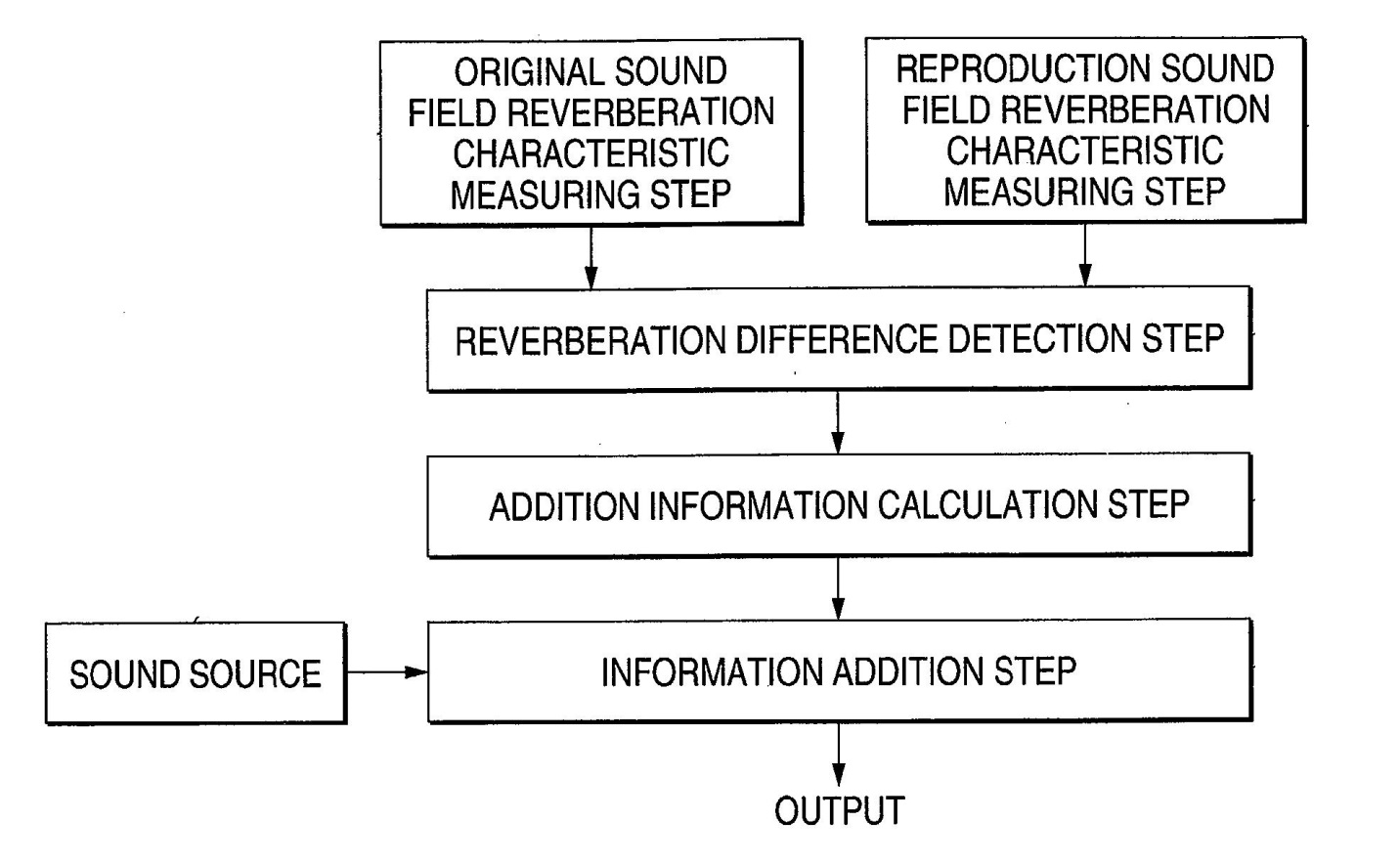
Example for adaptation of reverberation in dependence of the number and position of passengers (A,B,C,D) in the vehicle (201). Variations in reverberation due to the passengers are measured. Once measured, reverberation is adapted accordingly (see figure).
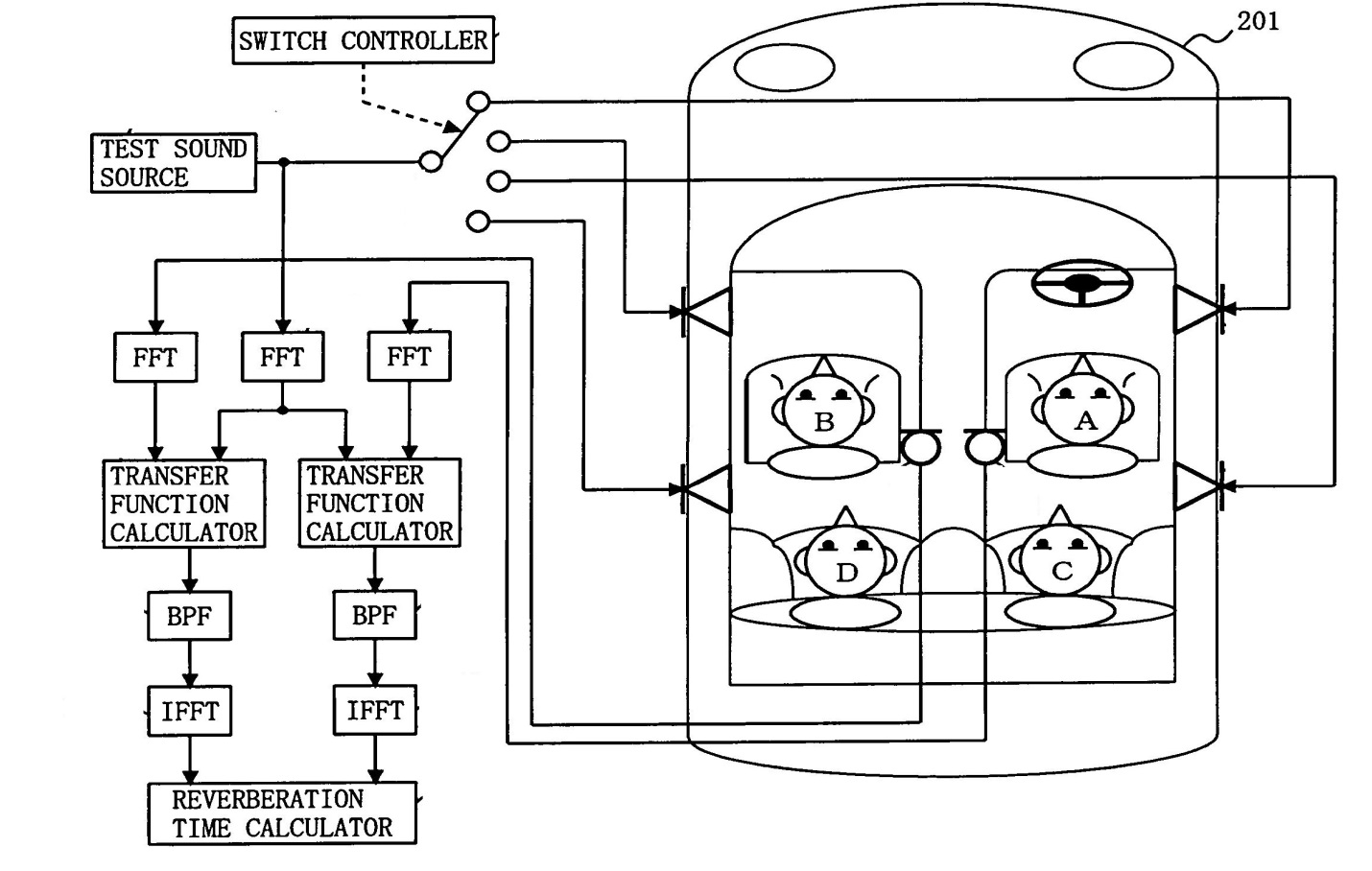
This place does not cover:
Automatic calibration of stereophonic sound system, e.g. with test microphone |
Attention is drawn to the following places, which may be of interest for search:
Measuring reverberation time, i.e. room acoustic measurements | |
Arrangements for producing a reverberation or echo sound | |
For public address systems |
This place covers:
Frequency adaption to the sound field. Example for adaptation of frequency in dependence of the number and position of passengers in the vehicle. Variations in frequency due to the passengers are measured. Once measured, the frequency response is adapted accordingly (see figure).
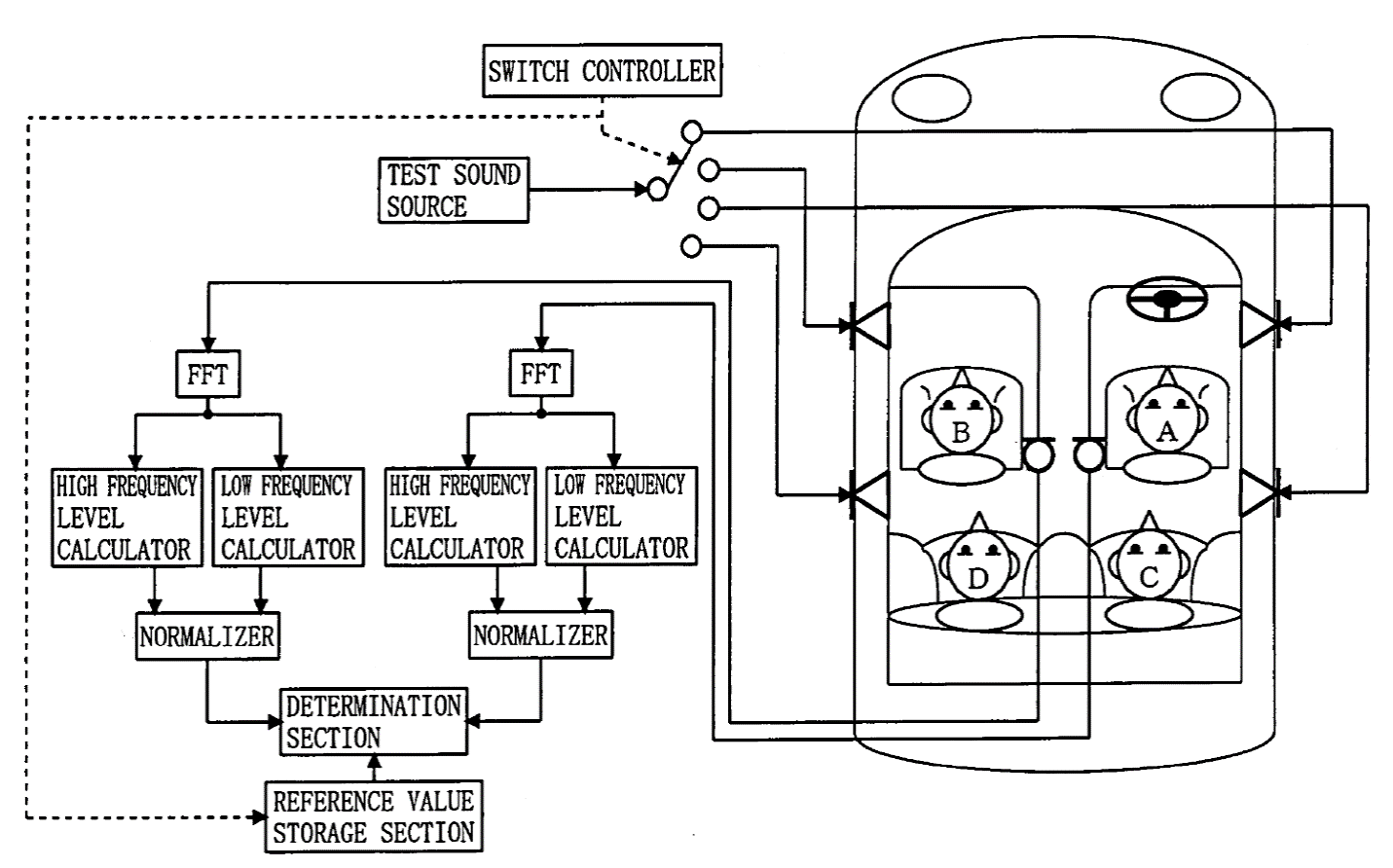
This place does not cover:
Automatic calibration of stereophonic sound system, e.g. with test microphone |
This place covers:
Adaptation of the stereophonic signal processing in dependence of the state of electrical connection of loudspeakers/headphones to respective output channels of stereophonic amplifiers.
For example, a multichannel system wherein the low frequency signals are treated differently depending on the presence of a subwoofer (see figure).
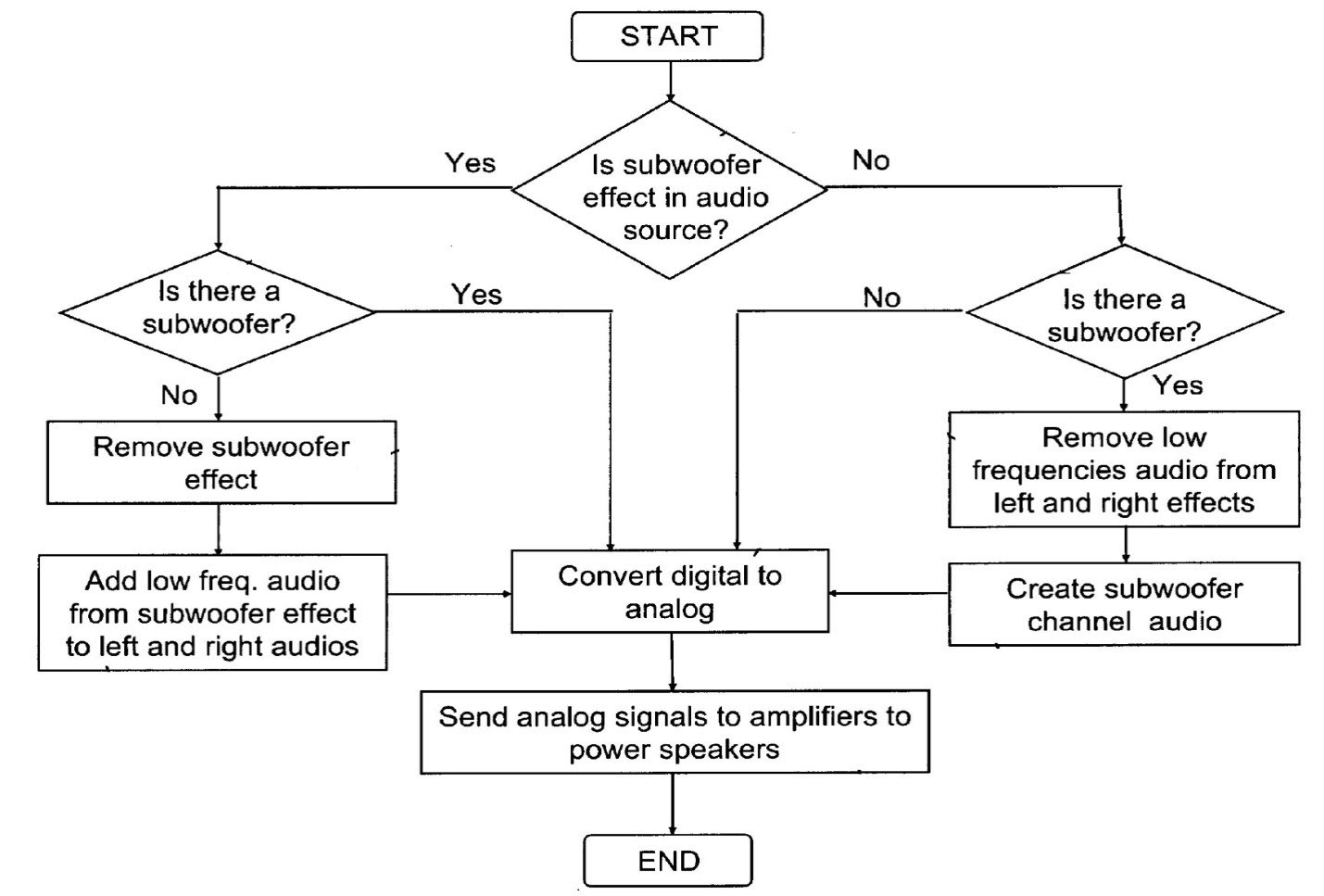
For example, a multi-room system with different loudspeaker configuration in the respective sound zones (see figure (Z1-Z4)). Audio signal processing of the multichannel sound signal is depending on the zone (room) the sound signal is outputted to.
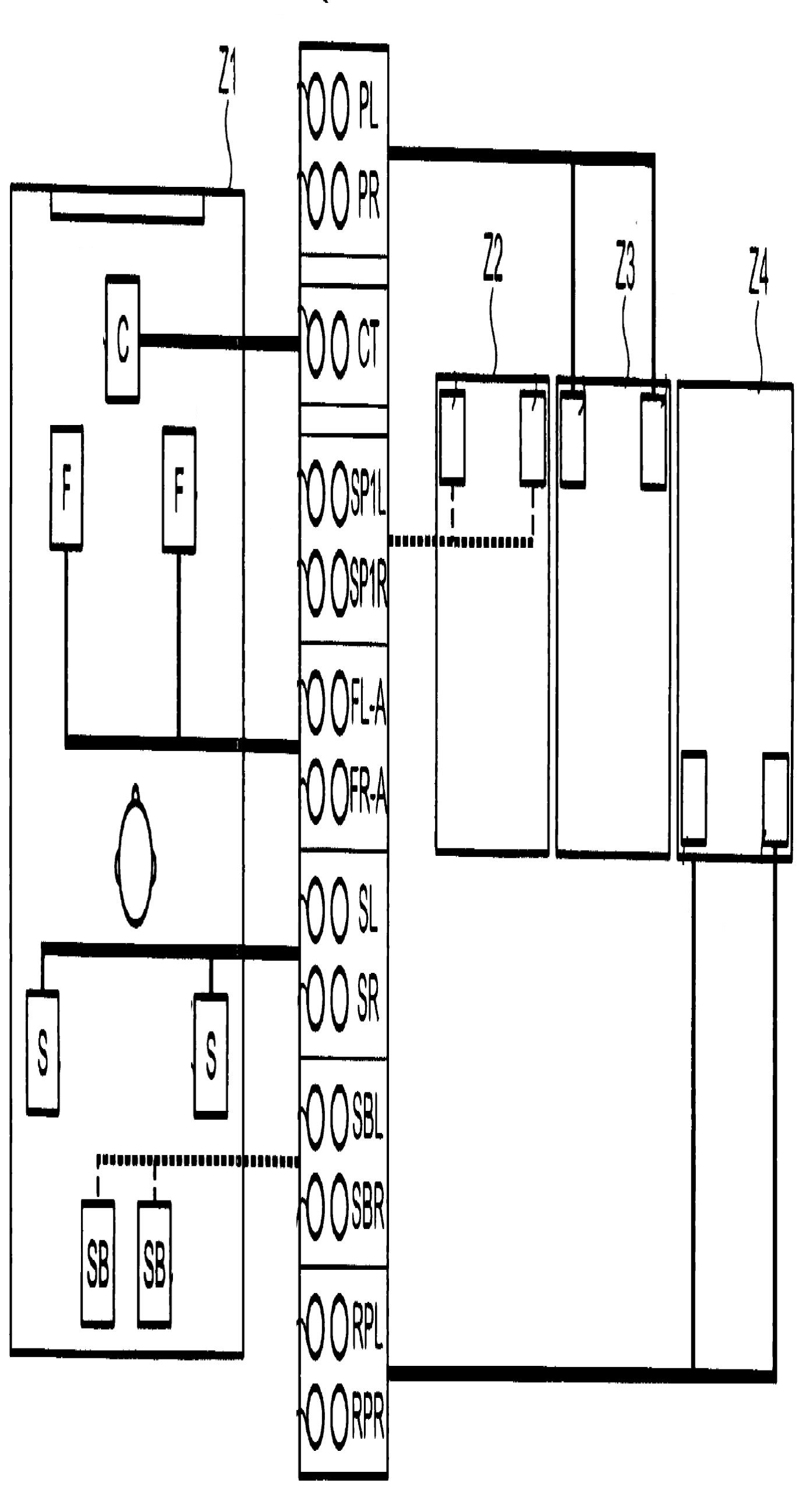
This place covers:
Display showing stereophonic sound image. For example, indicating power and the frequency of the channels (X1-X5) as shown in the figure. The shading indicates the frequency characteristics and the radius of the shaded area the power of the signal for the channels.
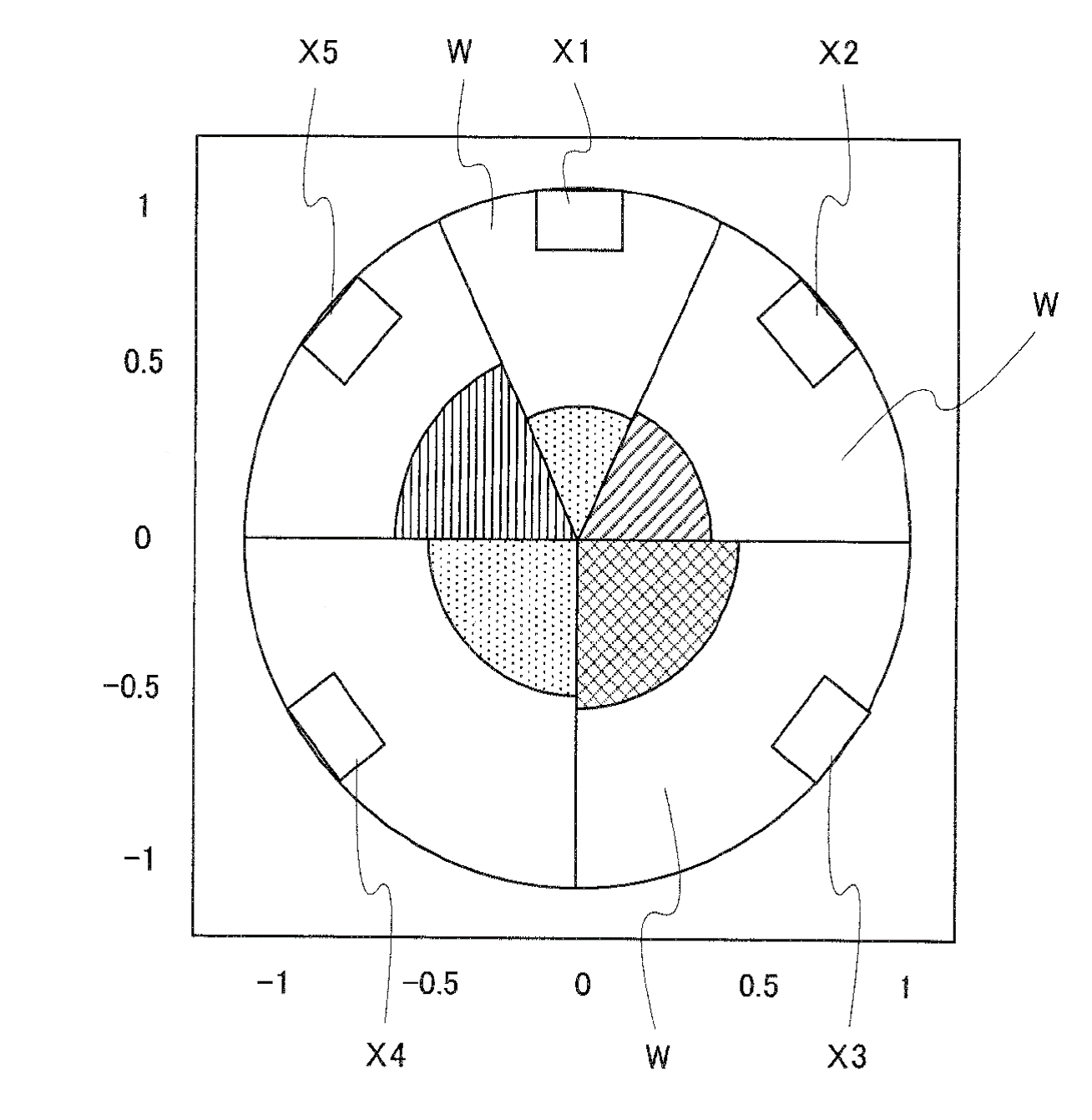
Channels are displayed and by sliding one of the controls one can rotate, change the width and the amplitude of the source channels which is visualised in the display.
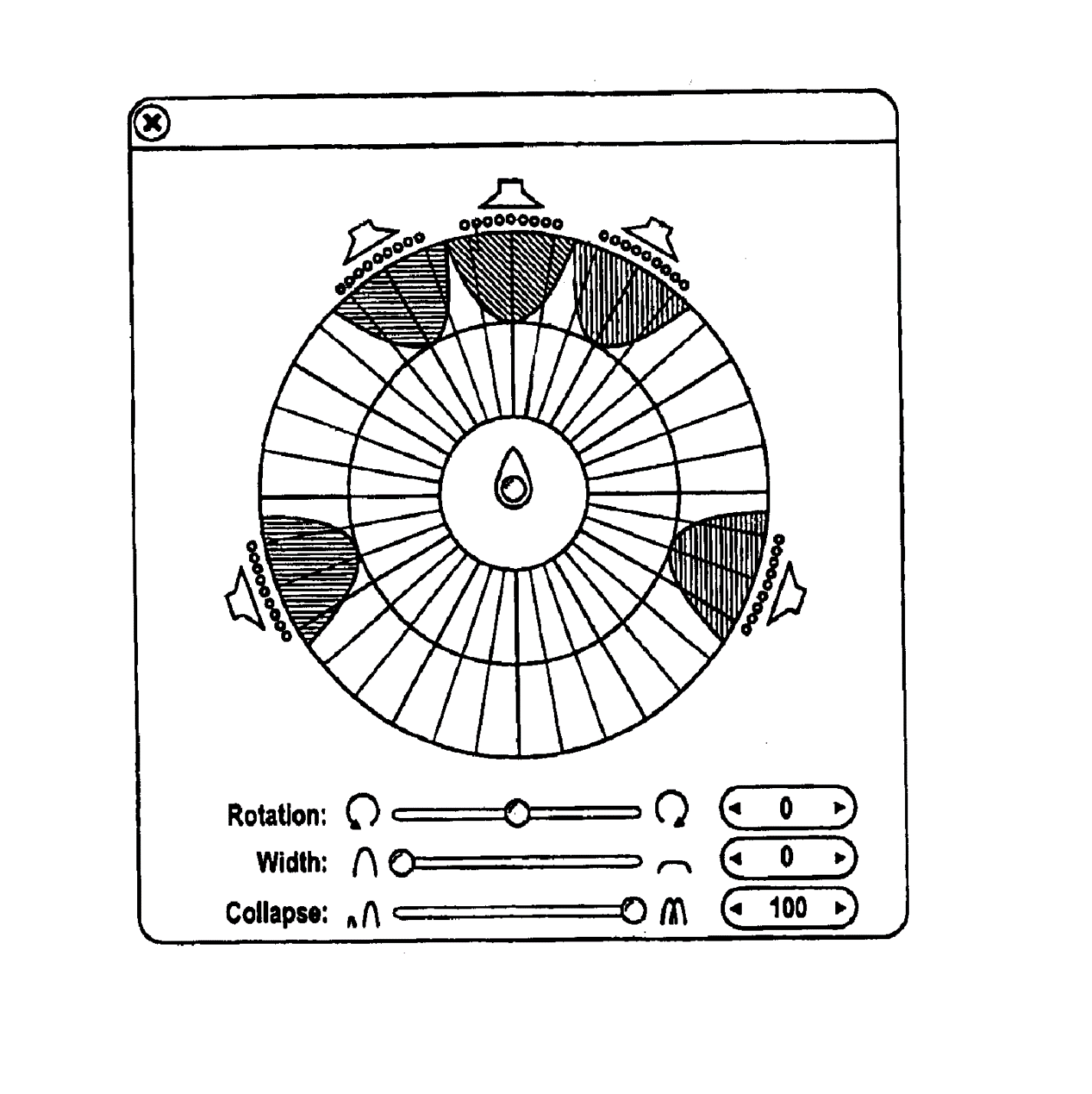
Attention is drawn to the following places, which may be of interest for search:
Indicating measured values | |
Arrangements for displaying electric variables or waveforms | |
Visual indication of individual audio signal levels |
This place covers:
Preservation of the multi-channel information is essential when reducing the number (more than two) of channels to two.
For example:
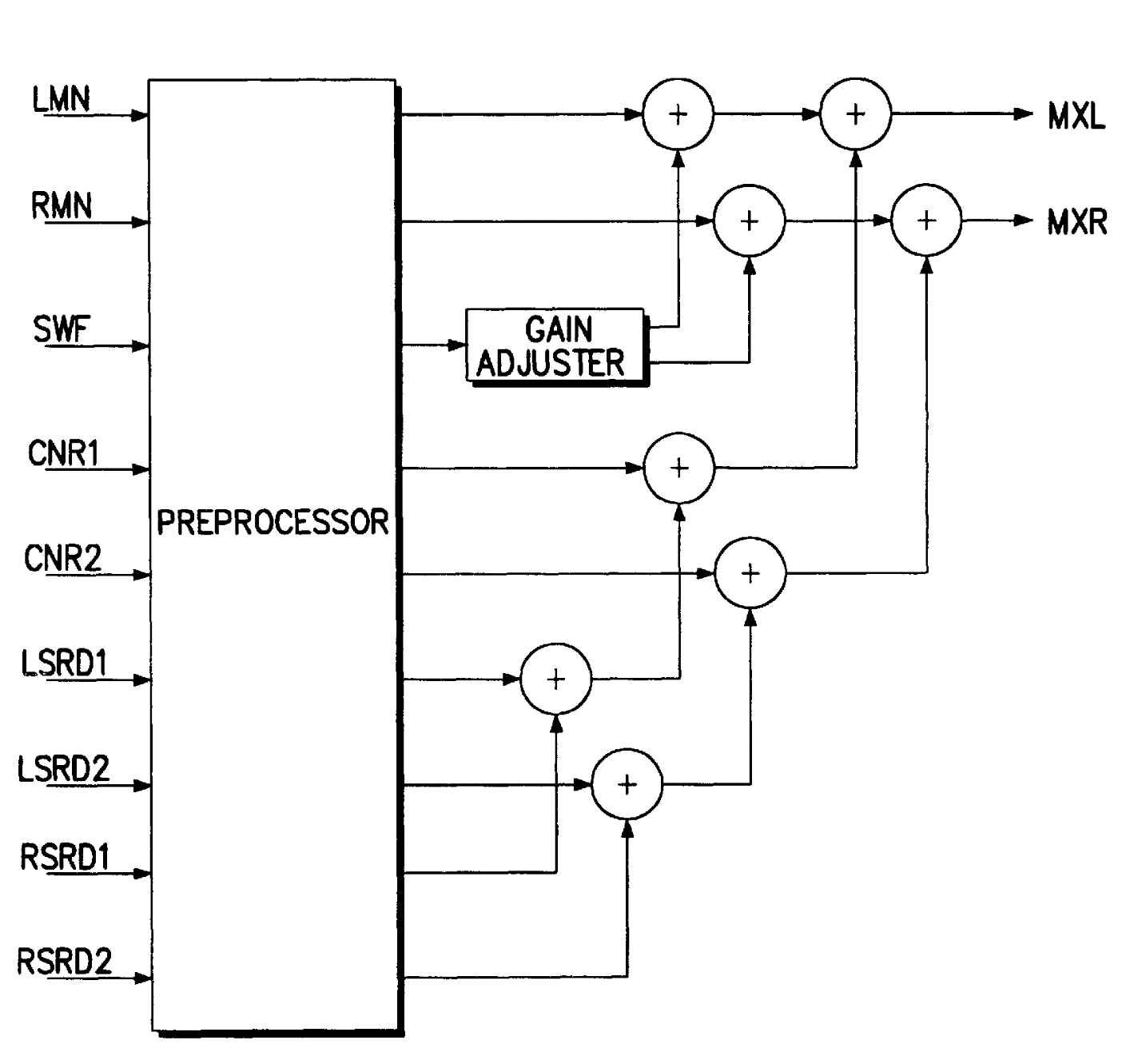
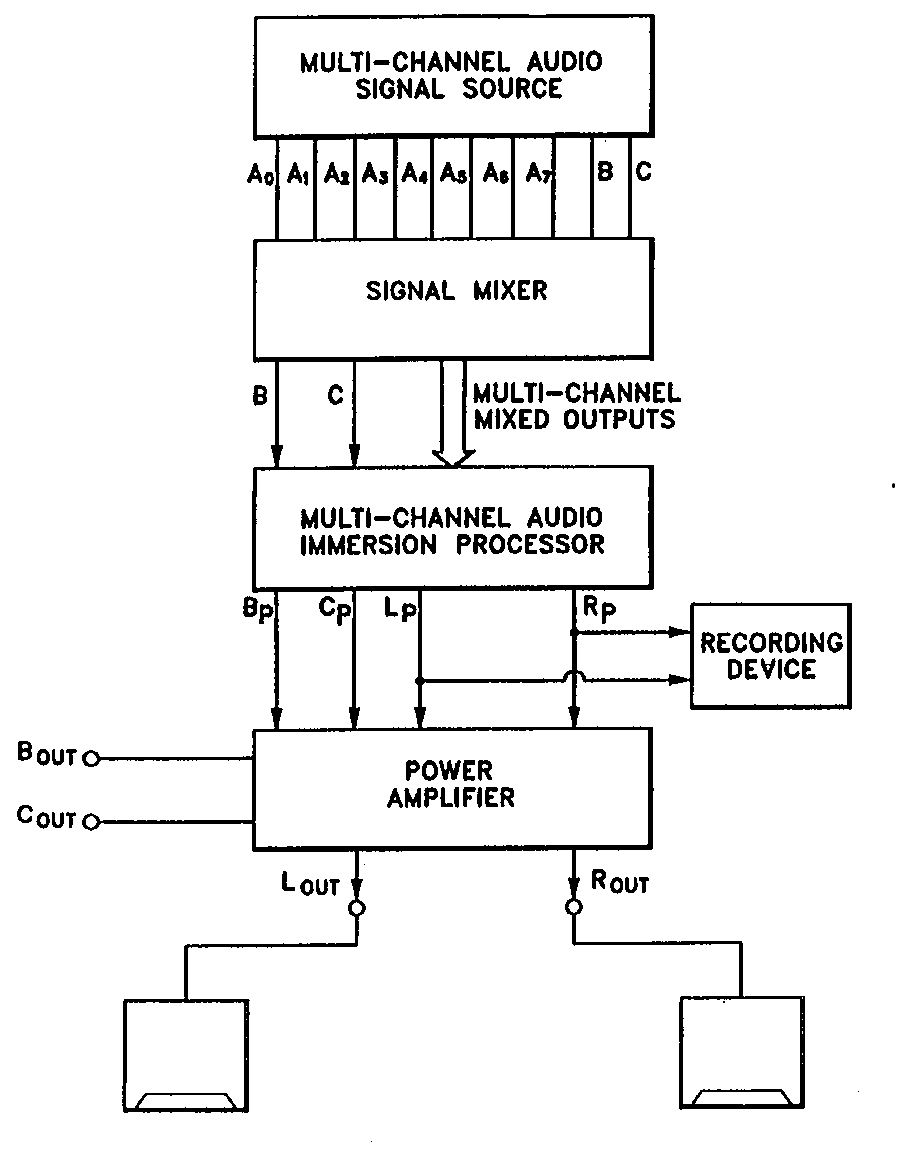
Attention is drawn to the following places, which may be of interest for search:
Aspects of down-mixing multi-channel audio to configurations with lower numbers of playback channels, e.g. 7.1 -> 5.1 |
This place covers:
The multi-channel information should be preserved as much as possible when reducing the number (more than two) of channels.
For example a reduction from five input channels to four.
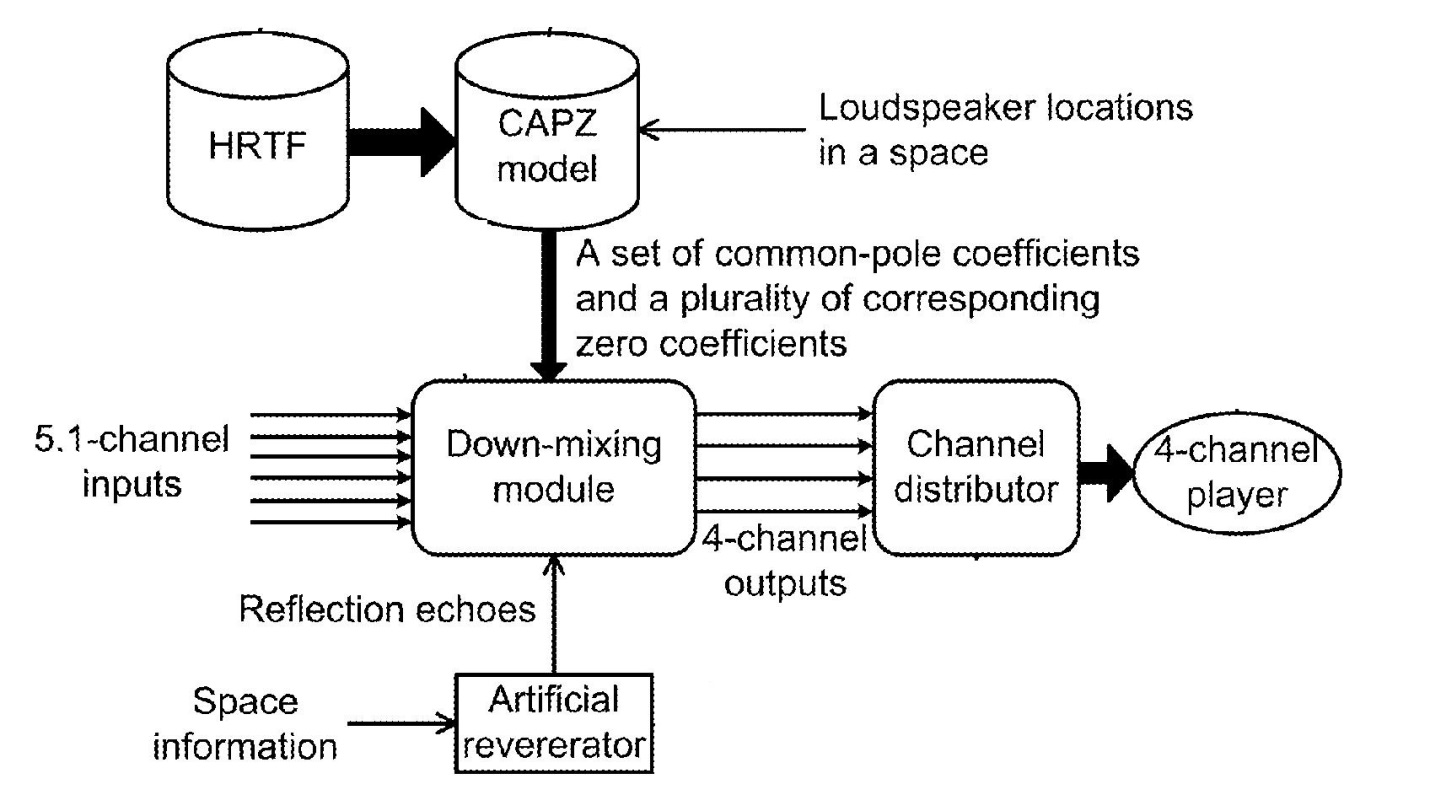
This place does not cover:
Multi-channel, i.e. more than two input channels, sound reproduction with two speakers wherein the multi-channel information is substantially preserved |
The mere presence of downward compatibility is not to be classified.
This place covers:
Signal processing with respect to the centre channel, e.g. generation, redistribution or adaptation.
Example for adaptation of centre channel (S):
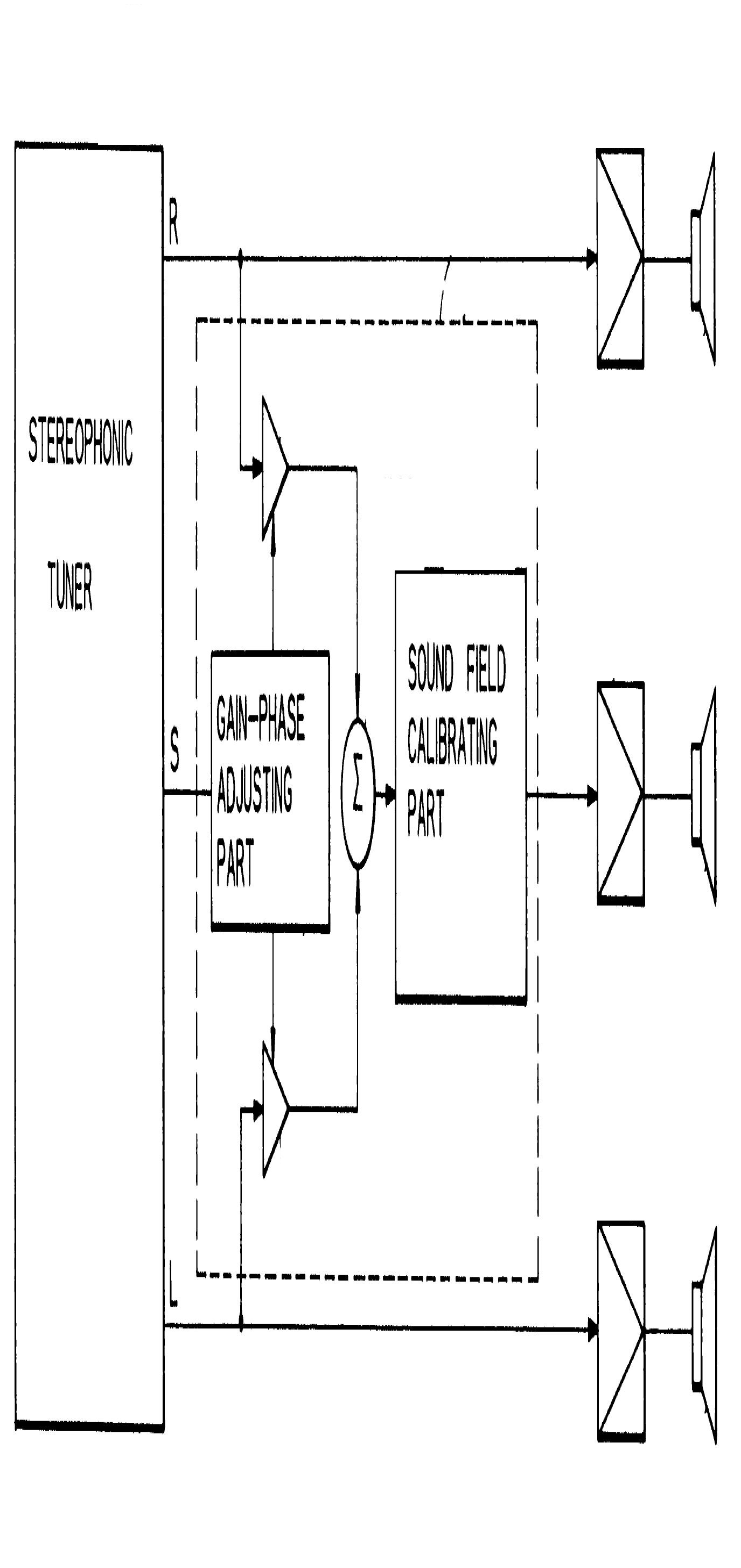
This place covers:
Signal processing with respect to the LFE channel, e.g. generation, redistribution. Figure 1. Example for of LFE channel of a 5.1 system to the other five channel (5.0 system).
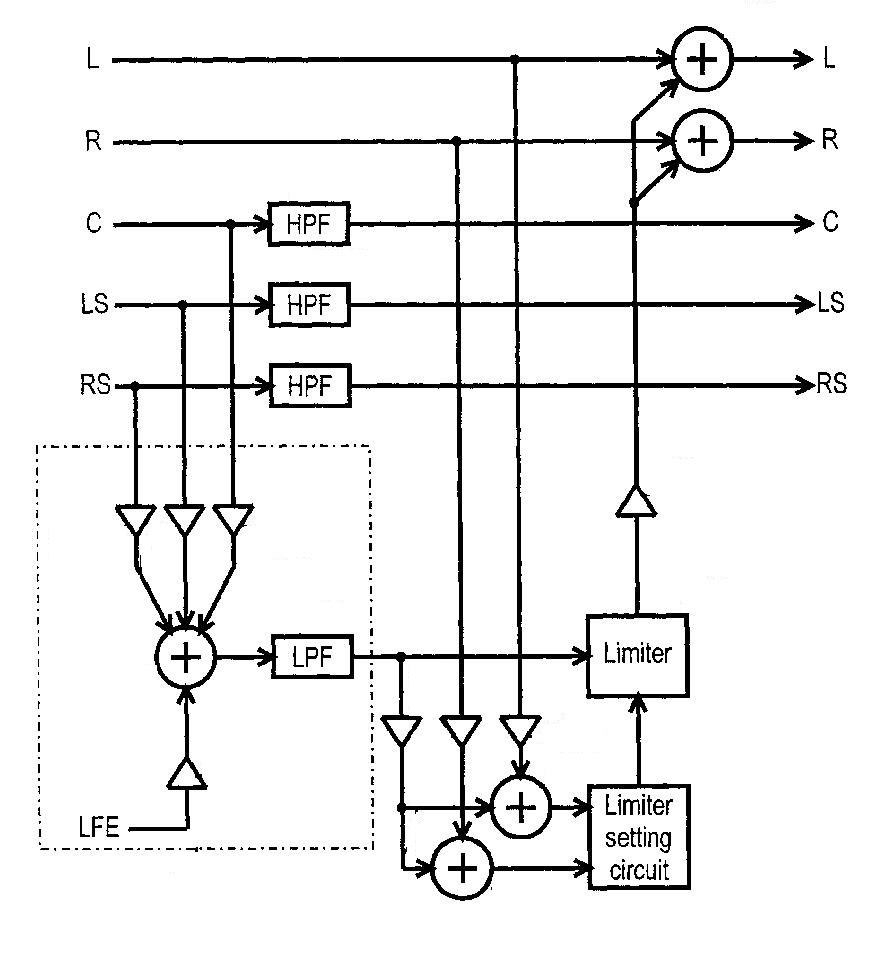
Figure 2. Example of redistribution of low frequency components of the 5 channels of a 5.1 system to the LFE channel.
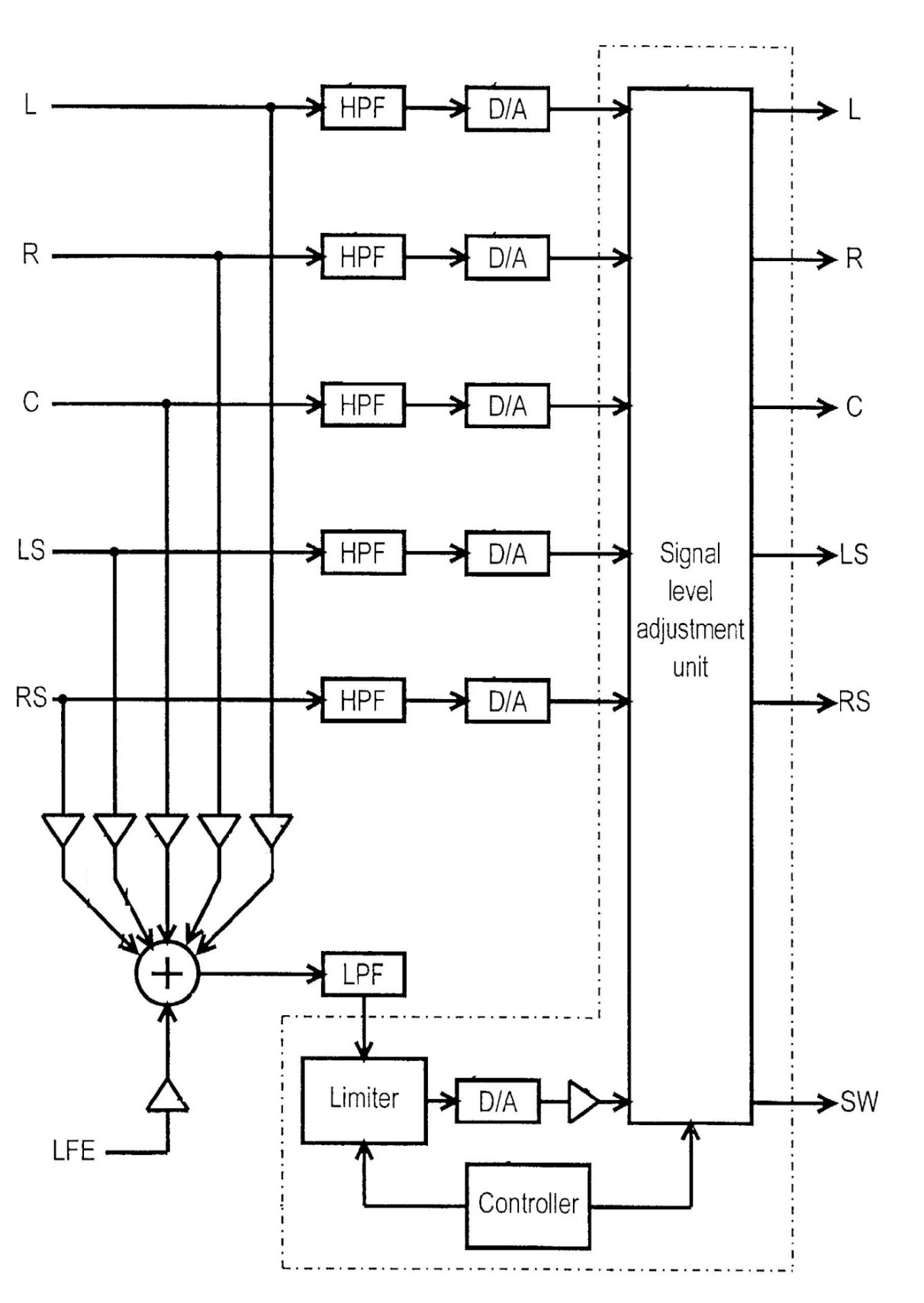
This place covers:
Distortion can be caused by the reproduction components (speakers, signal processing). In the example below the phase distortion is reduced.
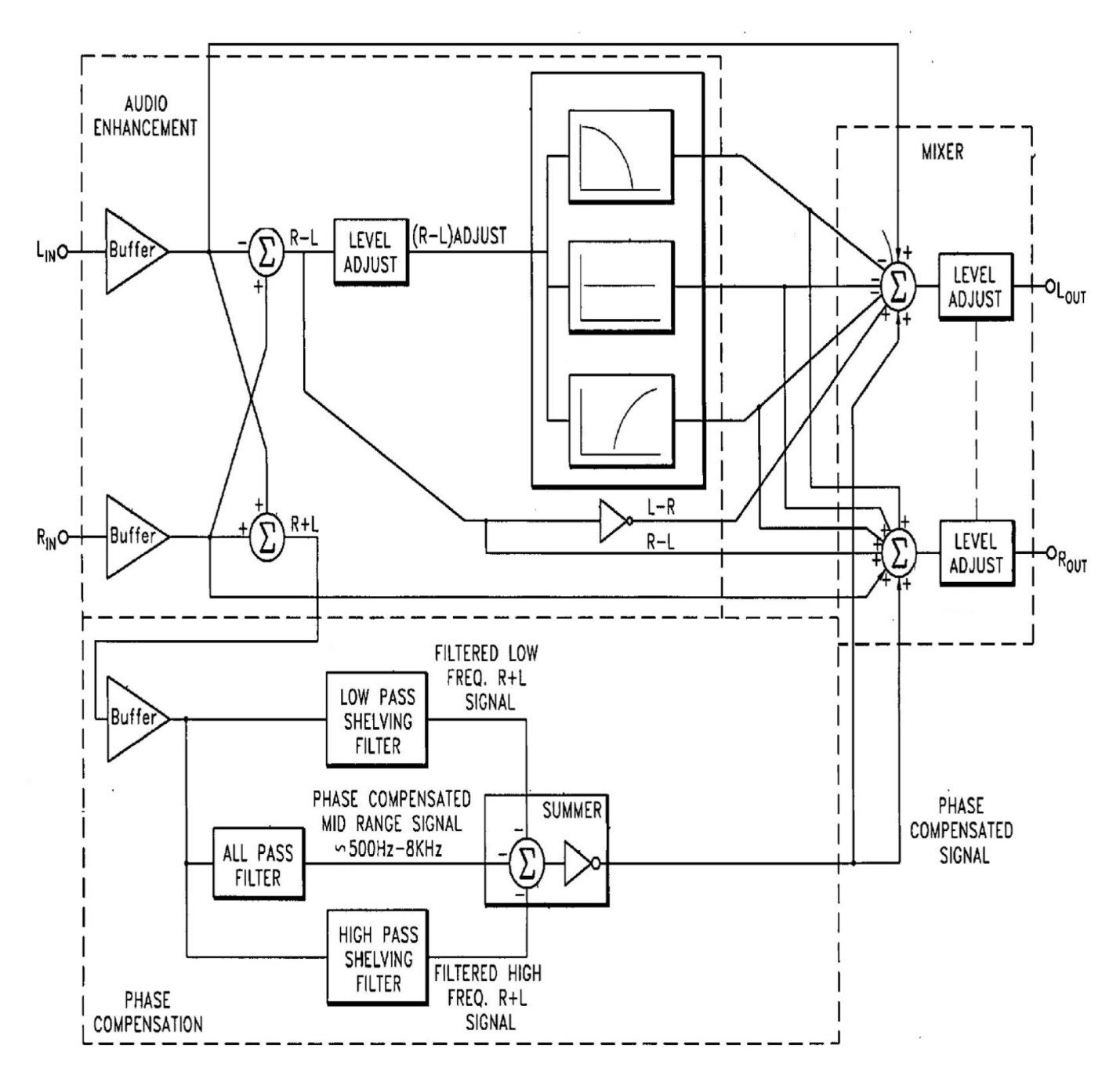
Distortion can be due to standing waves, which are in the example below suppressed by compensating loudspeaker 5.
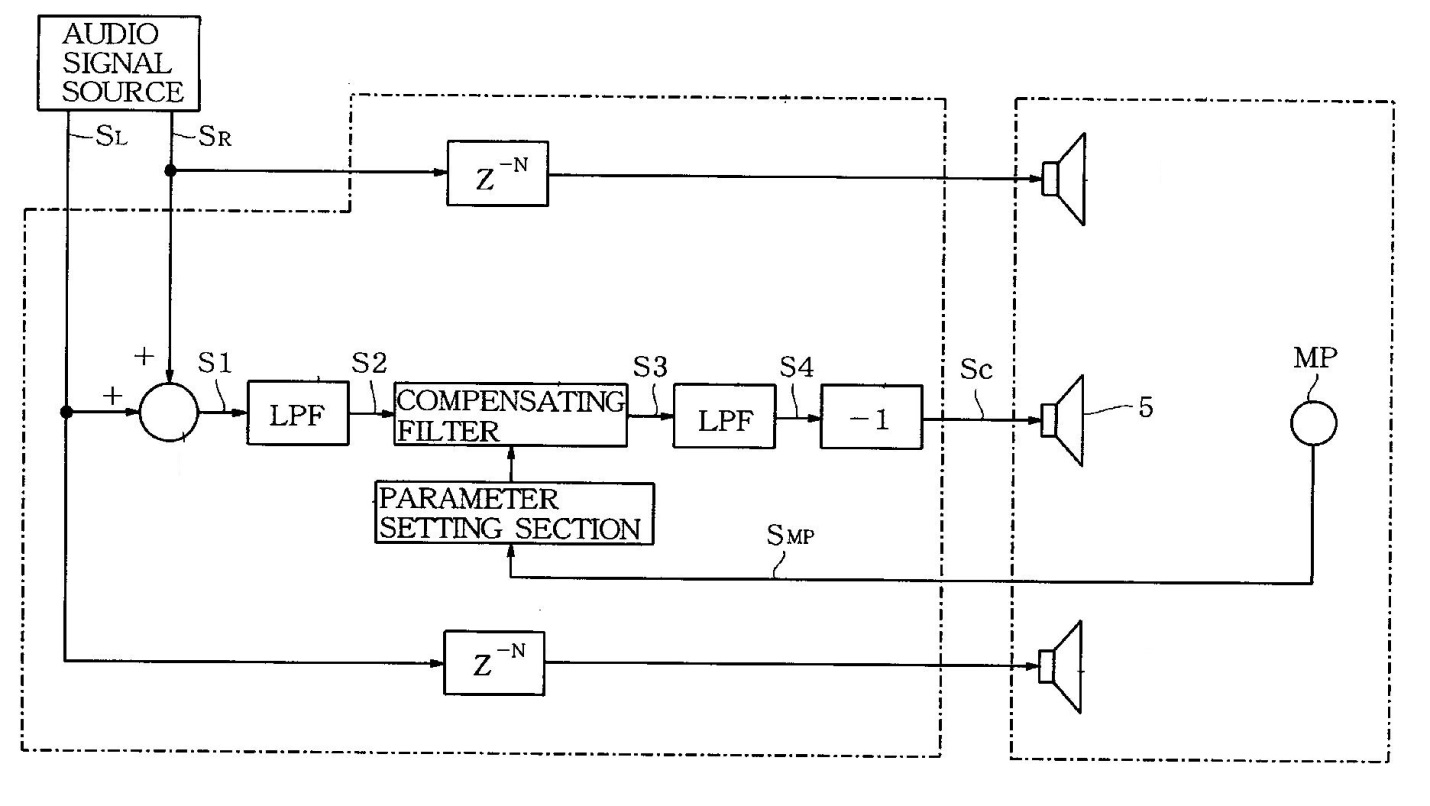
Attention is drawn to the following places, which may be of interest for search:
Reduction of non-linear distortion in audio amplifiers |
This place covers:
Figure 1. Sound objects are first extracted during recording and combined reproduction.
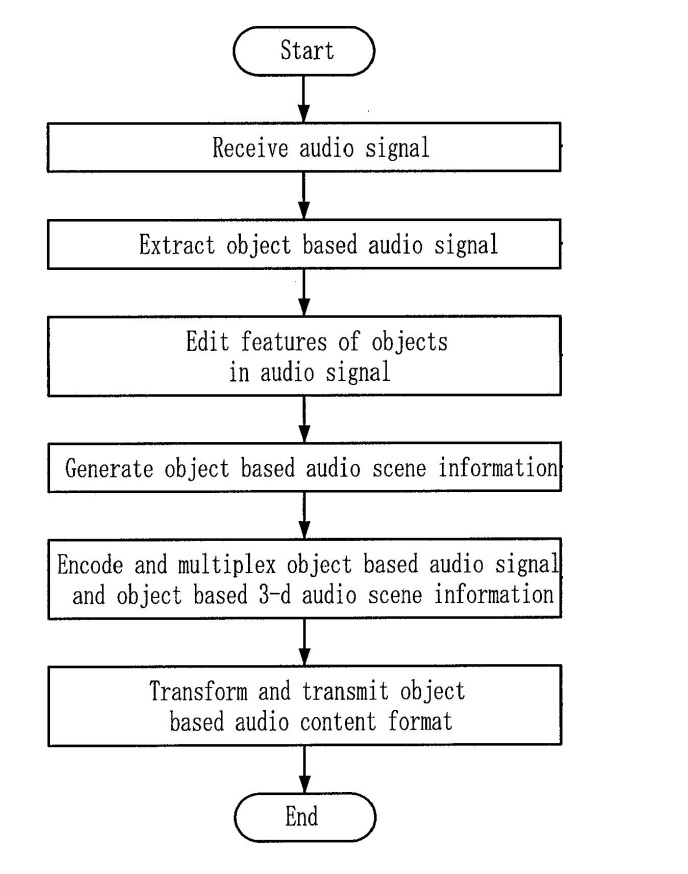
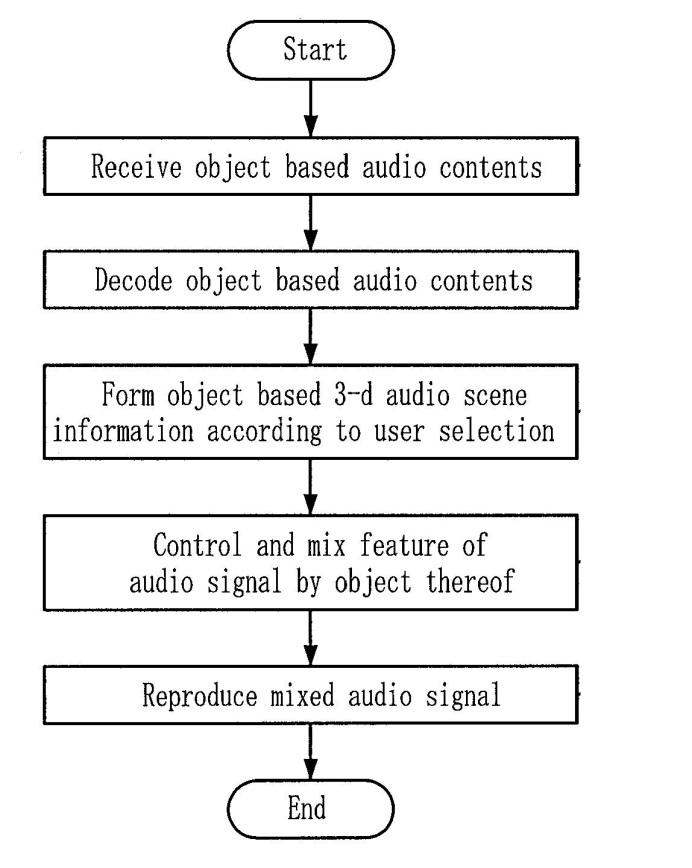
Figure 2. Extraction can be done with the help of a camera.
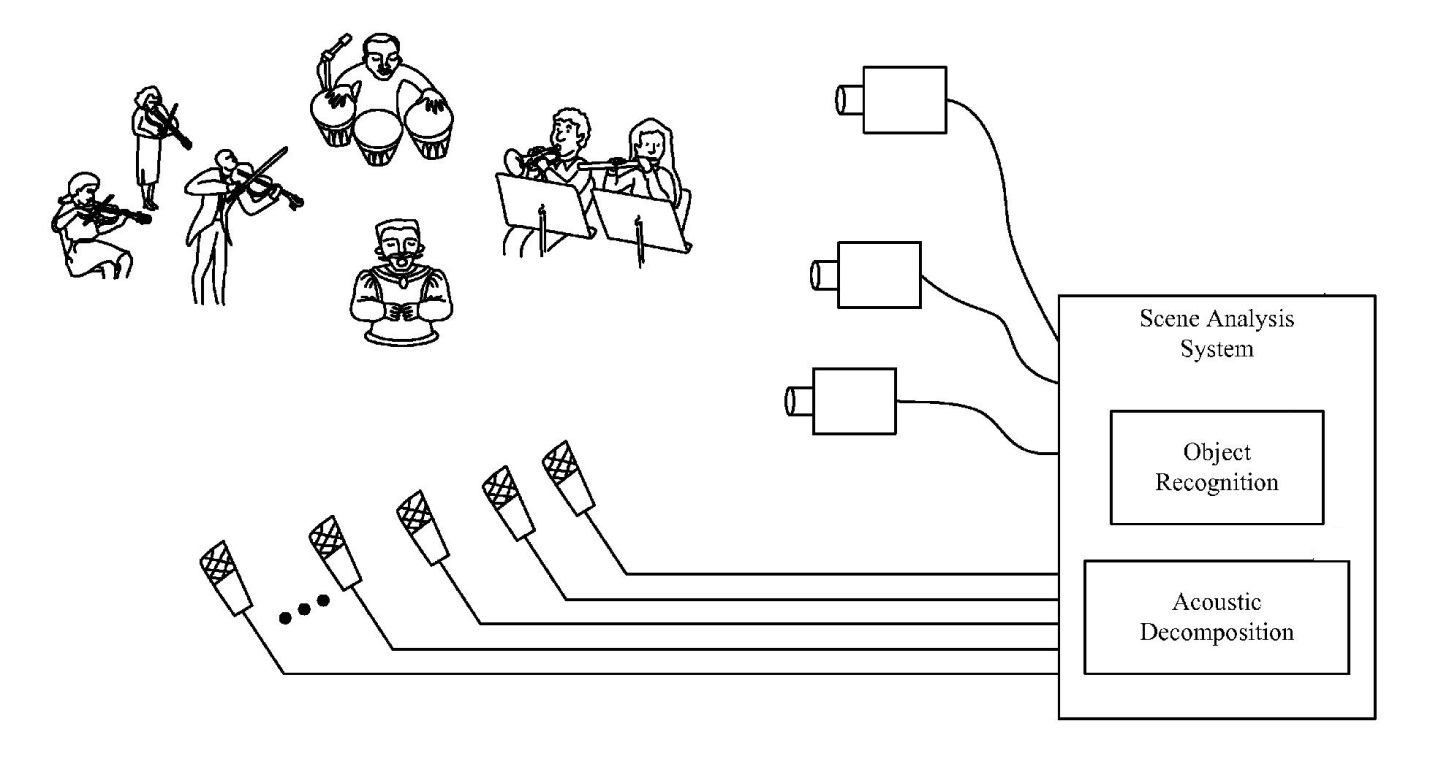
This place does not cover:
Application of wave-field synthesis in stereophonic audio systems |
Attention is drawn to the following places, which may be of interest for search:
Positioning of sound field itself, e.g. balance and fading of the loudspeaker signals | |
Aspects of volume control, not necessarily automatic, in two and multi-channel sound systems |
In this place, the following terms or expressions are used with the meaning indicated:
Sound object | audio object, i.e. acoustic representation of a sound producing entity in a sound field |
Sound source | real or virtual loudspeaker |
In patent documents, the following words/expressions are often used as synonyms:
- "virtual sound sources", "virtual sound objects" and "virtual loudspeakers"
This place covers:
Control of volume.
Figure 1. Volume Control
For example, note the following figure showing aspects of volume control.
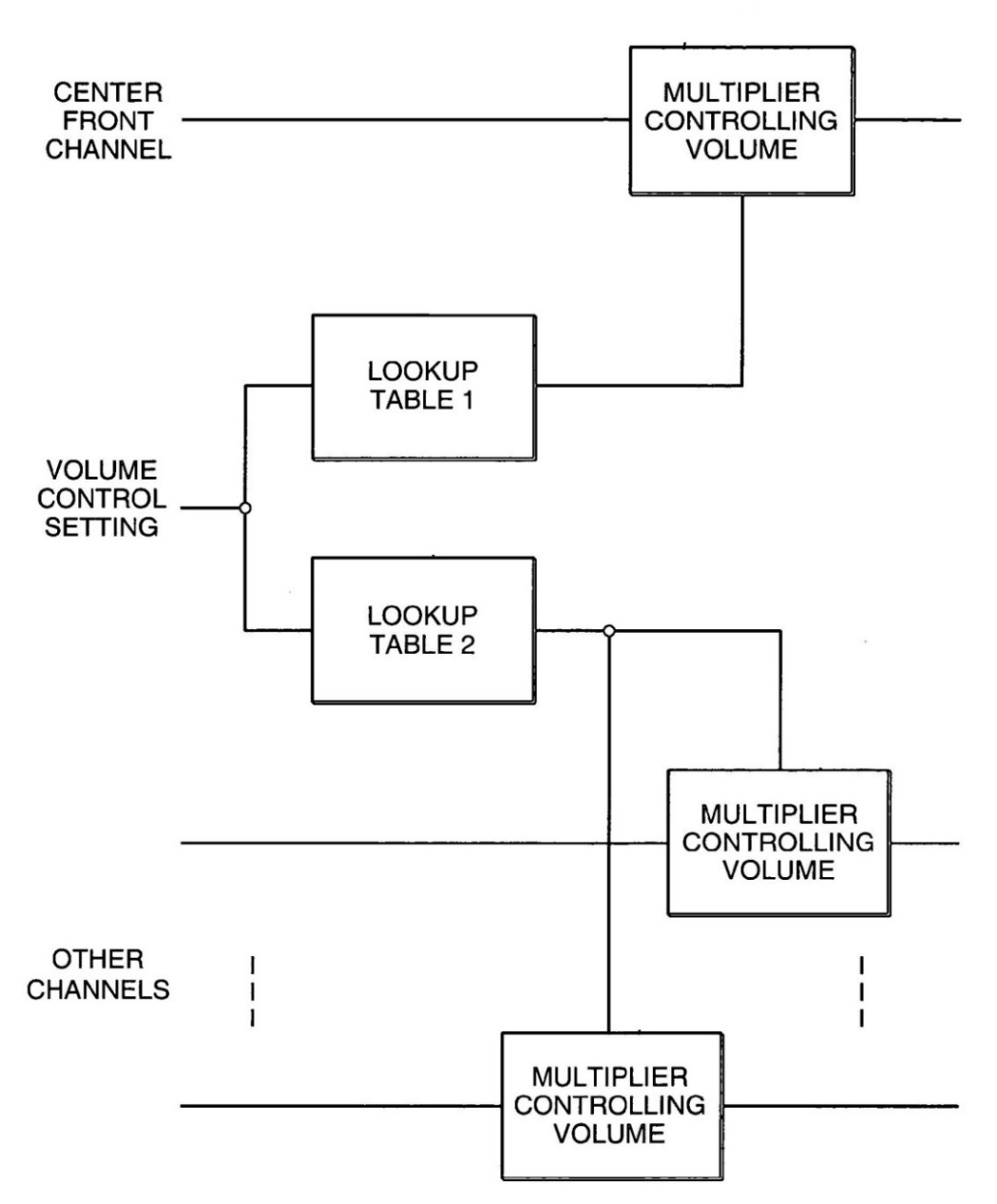
This place covers:
Figure 1. Capture and reproduction of sound objects.
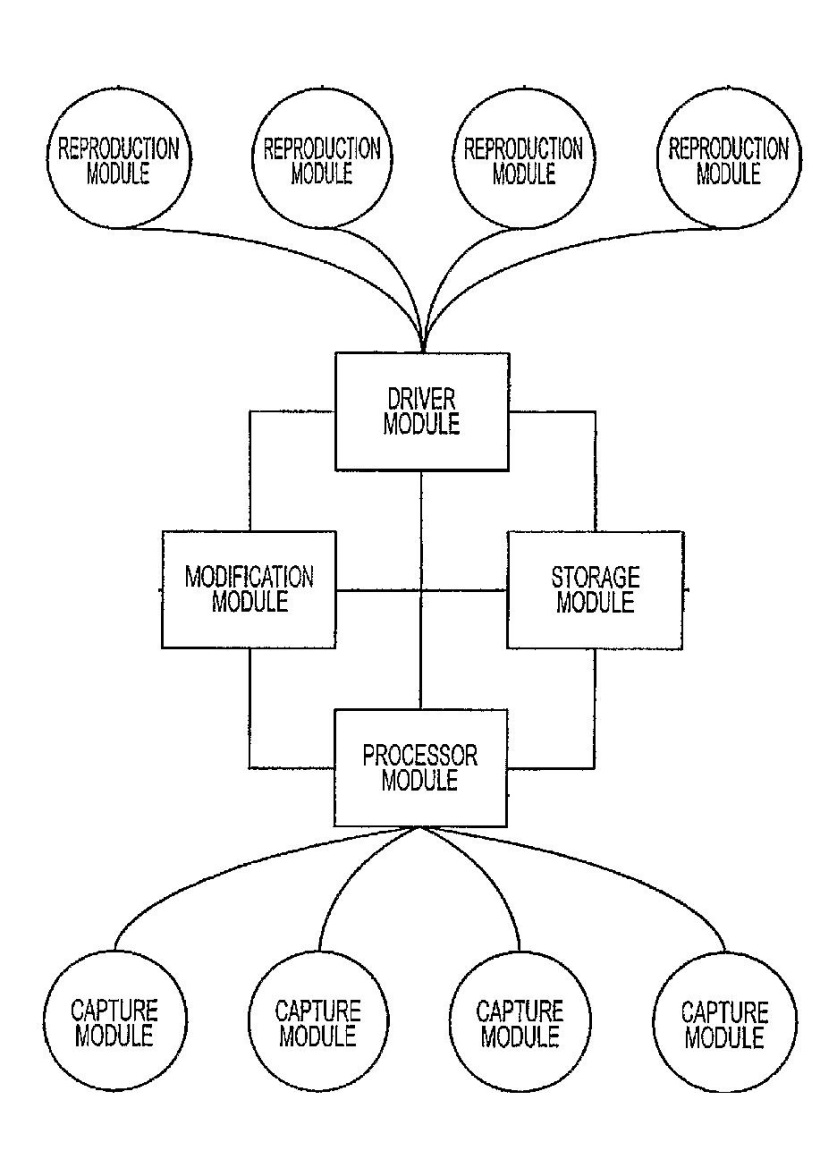
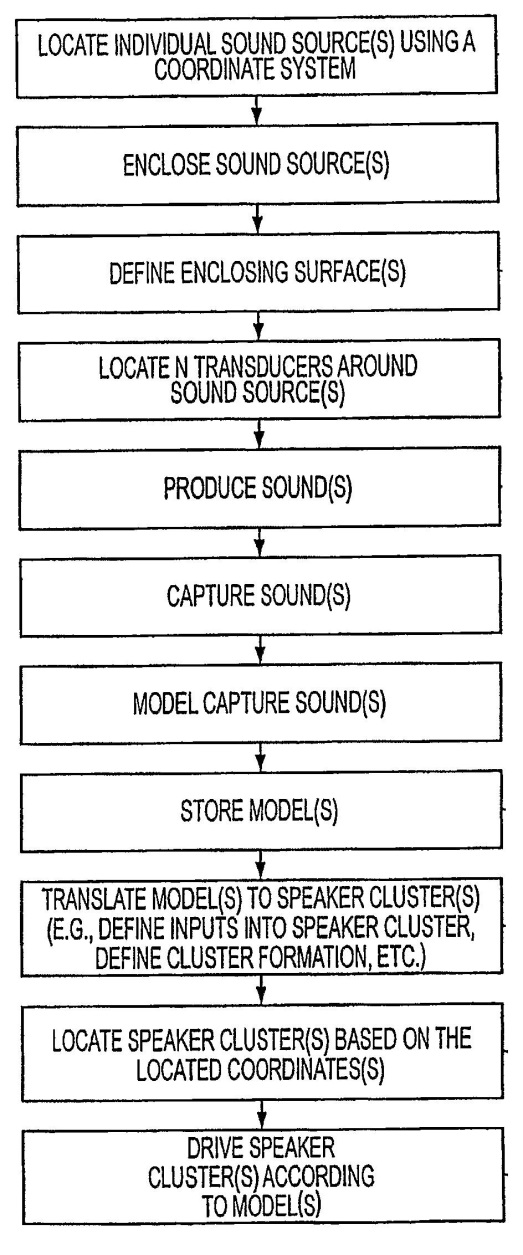
Figure 2. Capture and reproduction of sound field.
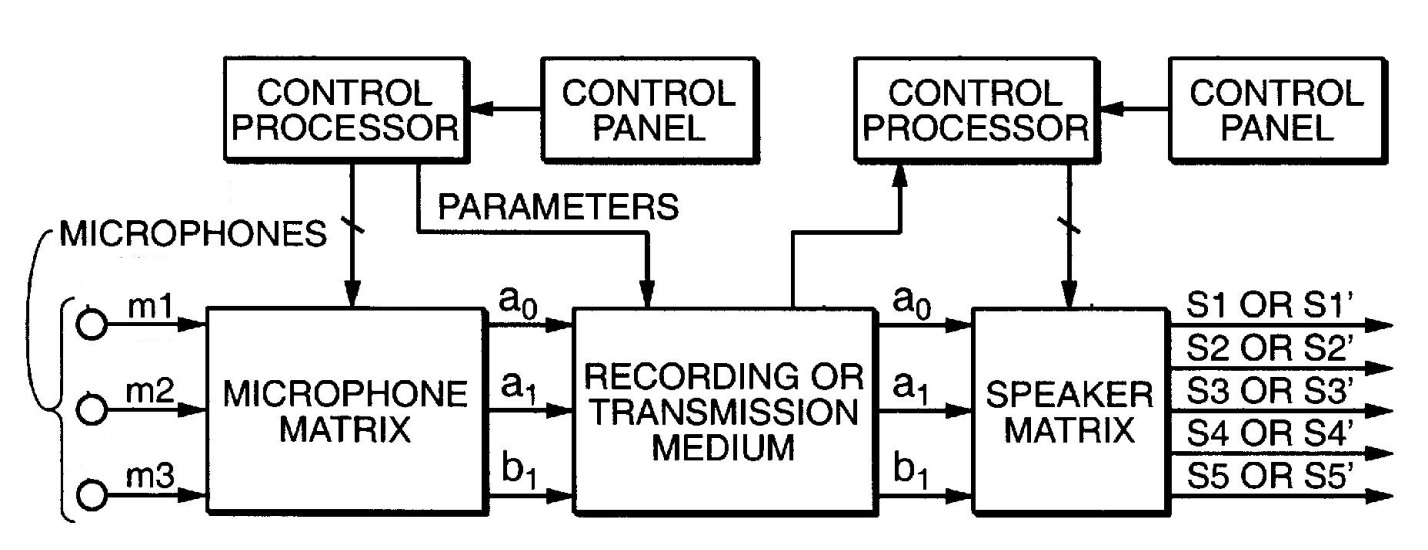
Attention is drawn to the following places, which may be of interest for search:
Spatial or constructional arrangements of microphones |
Documents only relating to spatial or constructional arrangements of microphones should not receive this Indexing Code group.
This place covers:
Improvement of the sound field taking transfer functions between ears and sound sources into account.
Examples:
Figure 1. 2-channel stereophonic reproduction on binaural headphones.
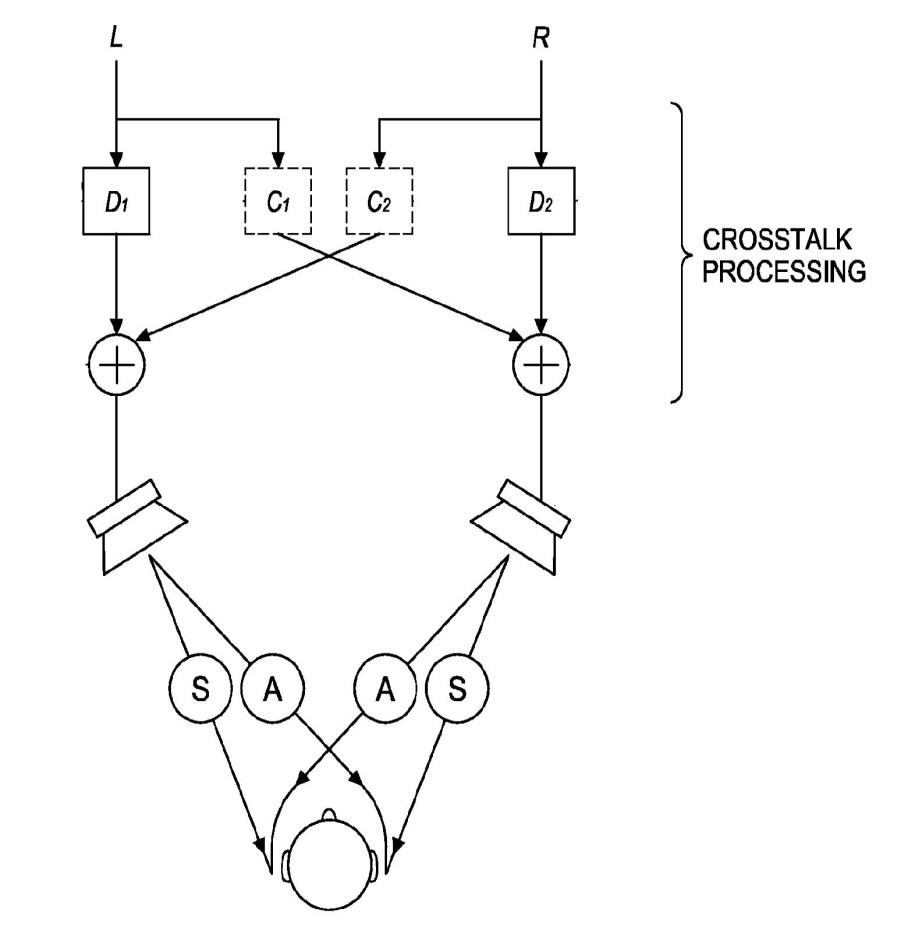
Figure 2. 5.1 reproduction on binaural headphones.
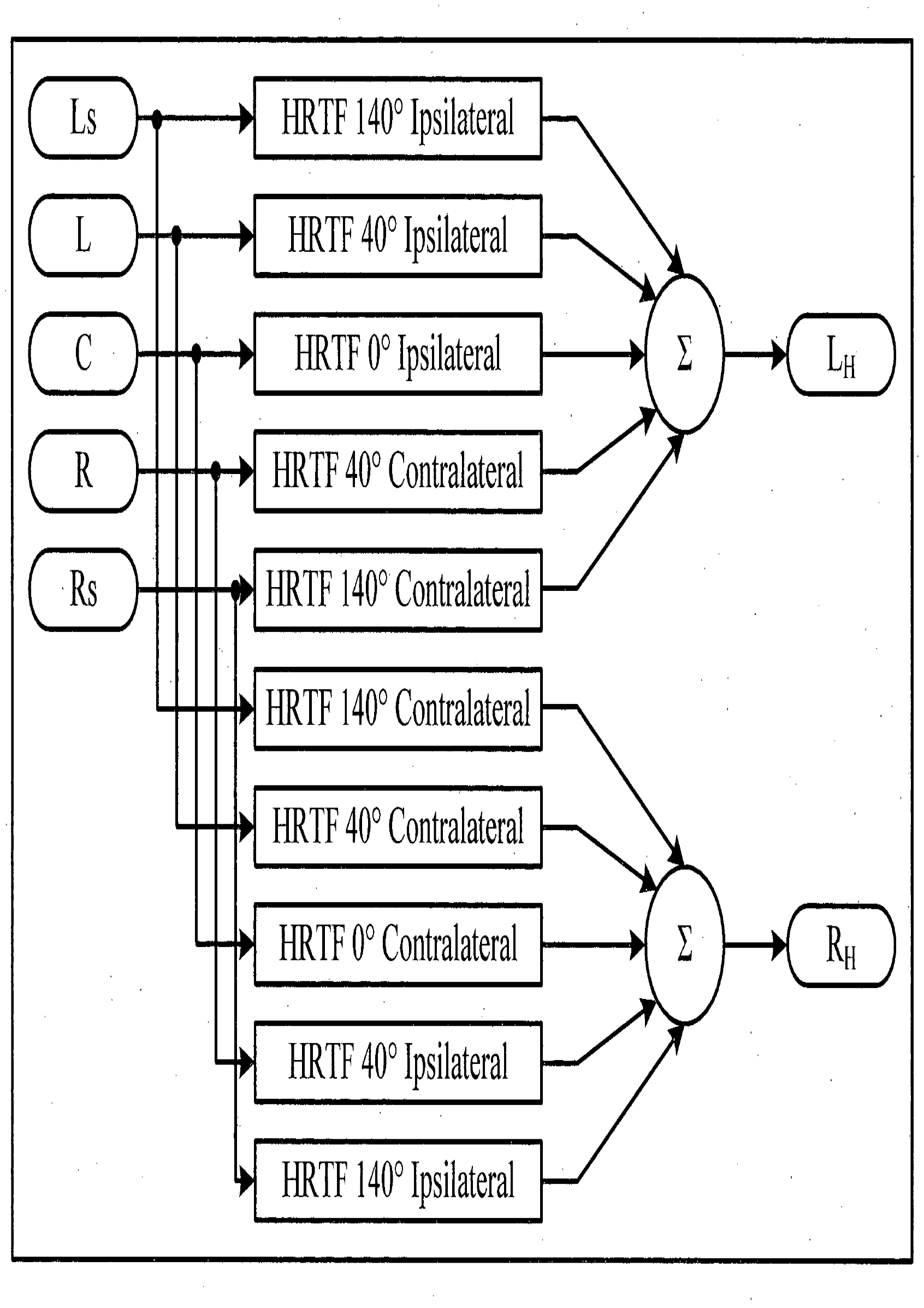
Figure 3. using HRTF to improve localisation for a binaural hearing aid system.
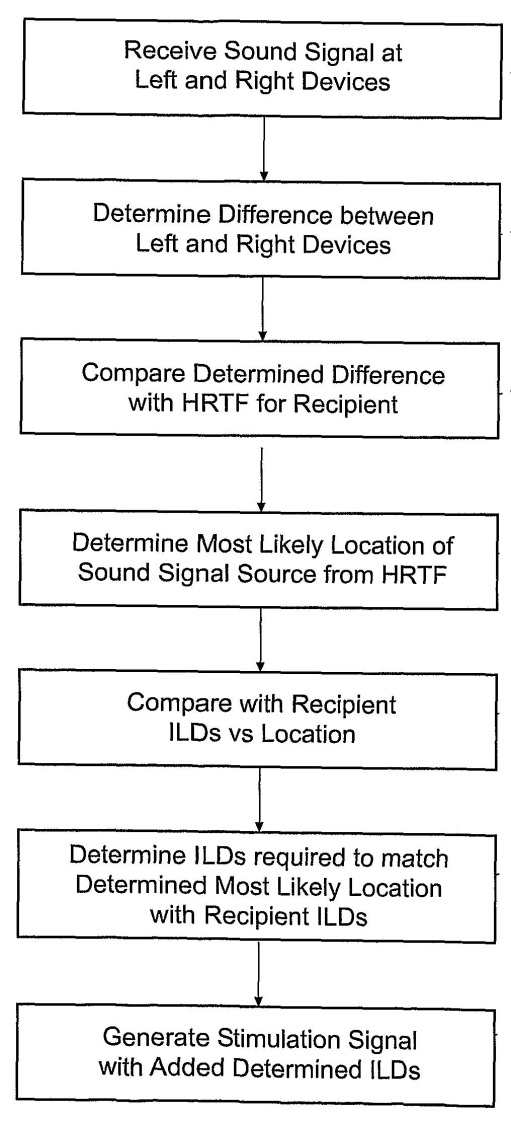
This place covers:
Aspects regarding parametric coding affecting the rendering in a stereophonic audio system.
For example:
Reduced computational load due to frequency dependent Binaural Cue Coding (BCC) analysis and synthesis.
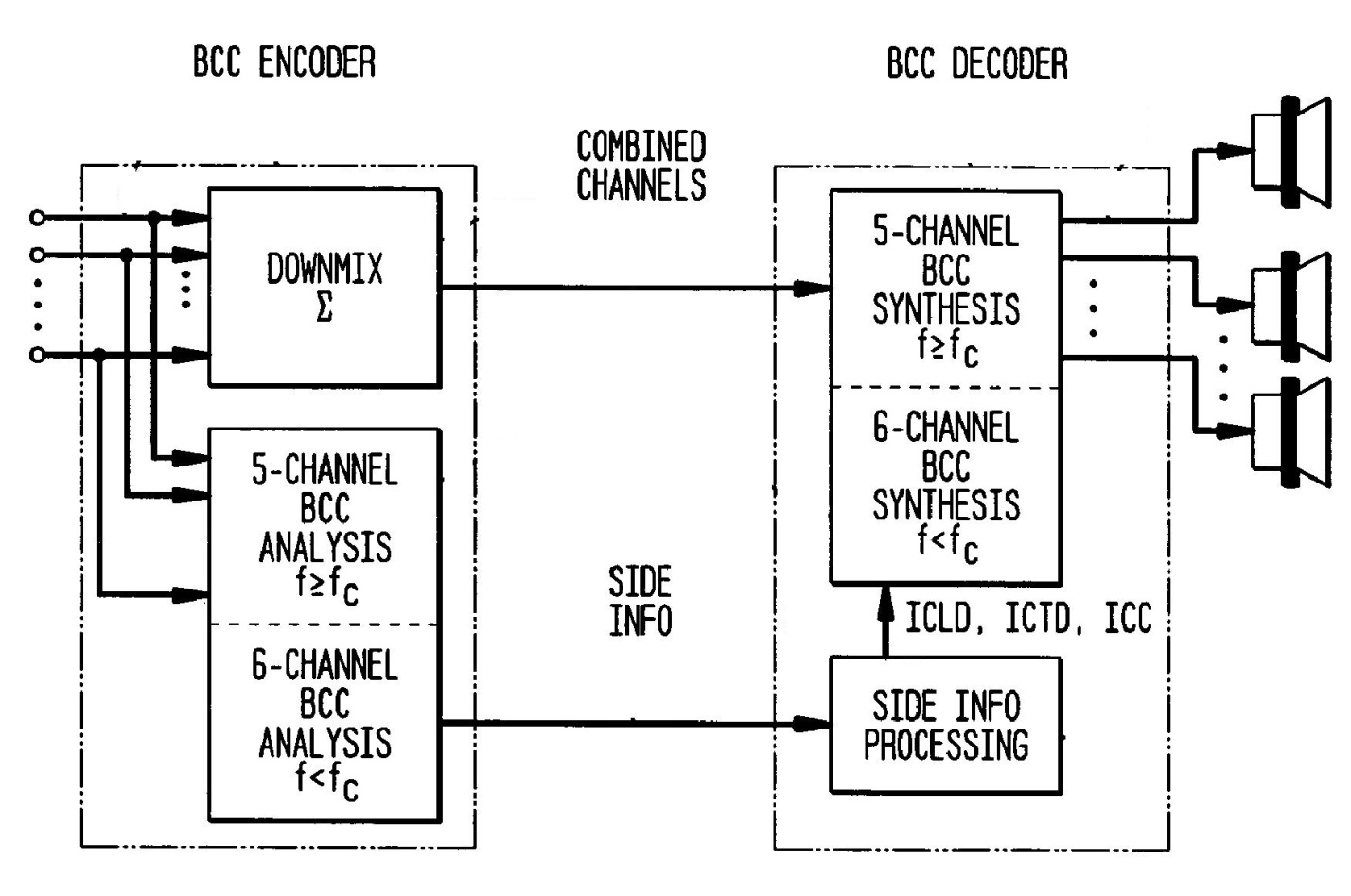
Attention is drawn to the following places, which may be of interest for search:
Parametric coding as such |
This place covers:
The use of the Haas effect to control the sound localisation from loudspeakers in a stereophonic sound sytem.
For example in the figure below: low frequency components of the centre output signal is routed to the main loudspeakers and is thus heard if coming from small centre channel loudspeaker.
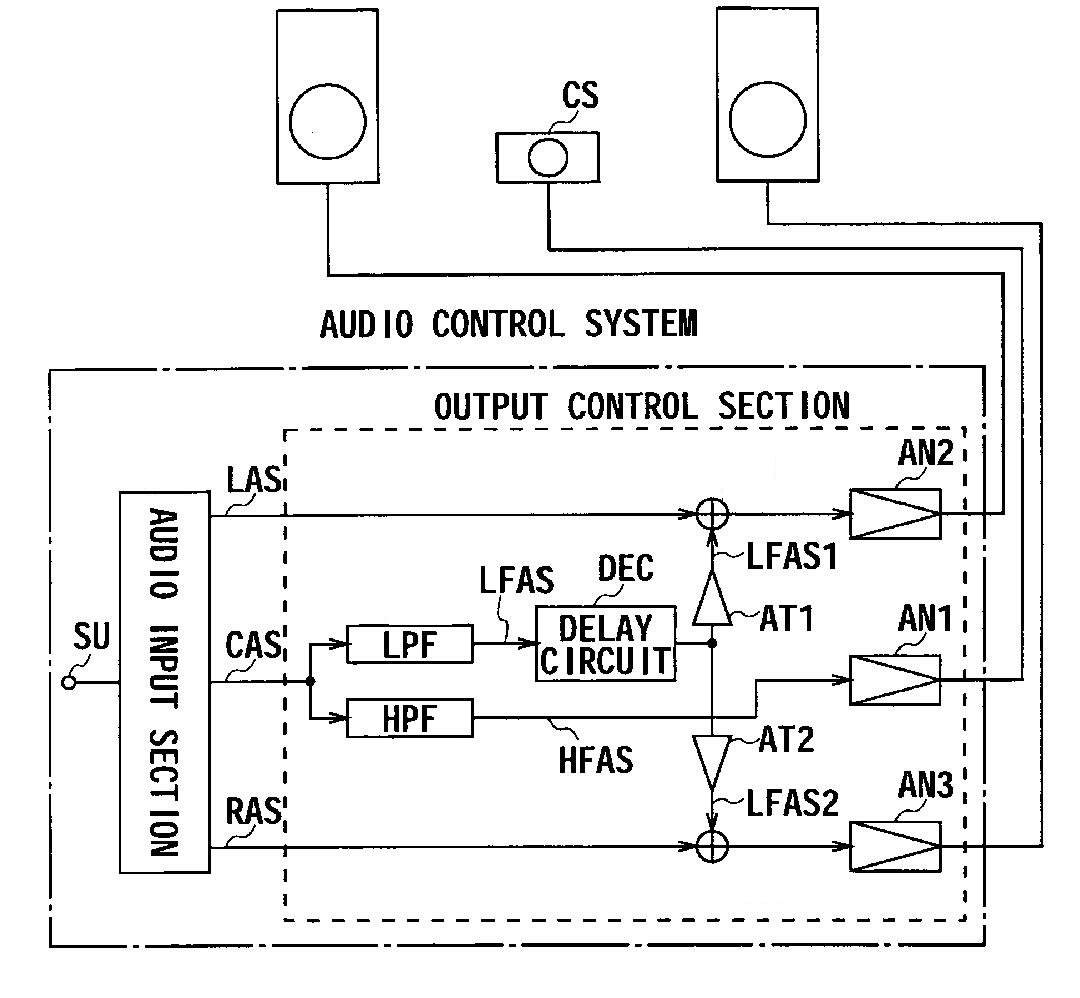
This place covers:
For example: Improved pseudo stereo generation by splitting the mono signal in different frequency bands (H1(z), H2(z)) and applying for band a different type of pseudo-stereo splitting filter (H11(z), H12(z), H21(z), H22(z); e.g. according to H. Lauridsen). Thus, the high frequency contribution to the pseudo stereo can be improved.
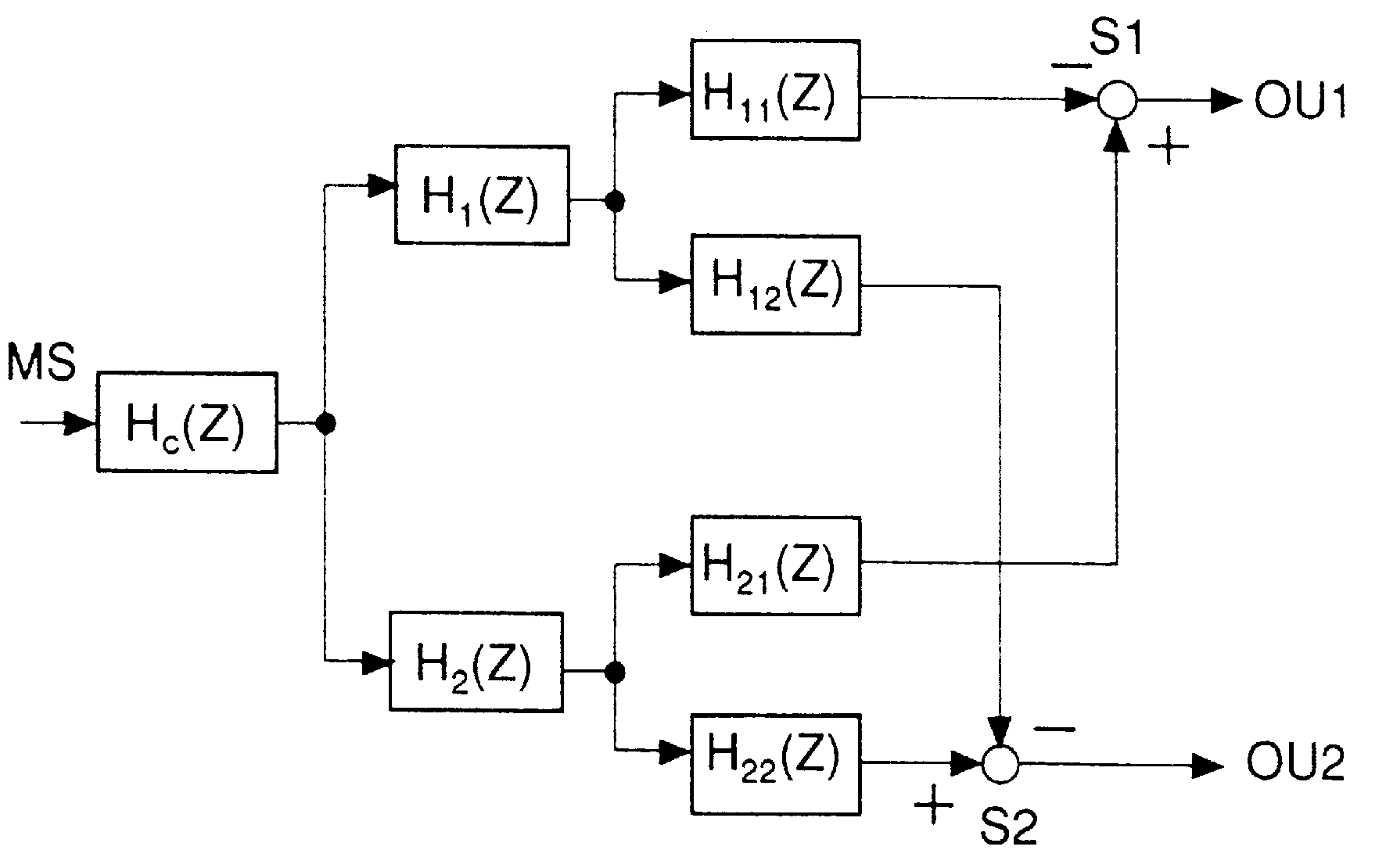
Attention is drawn to the following places, which may be of interest for search:
Digital filter banks | |
Crossover filters for loudspeakers |
The mere indication of band splitting or presence of a filter bank (e.g. fast Fourier transform (FFT); or finite impulse response (FIR)) is not sufficient to mandate classification into this Indexing Code group.
This place covers:
The ambisonic B-format system is a high quality sound positioning system which operates by breaking down the directionality of the sound into spherical harmonic components termed W, X, Y and Z
For example:
Figure 1.
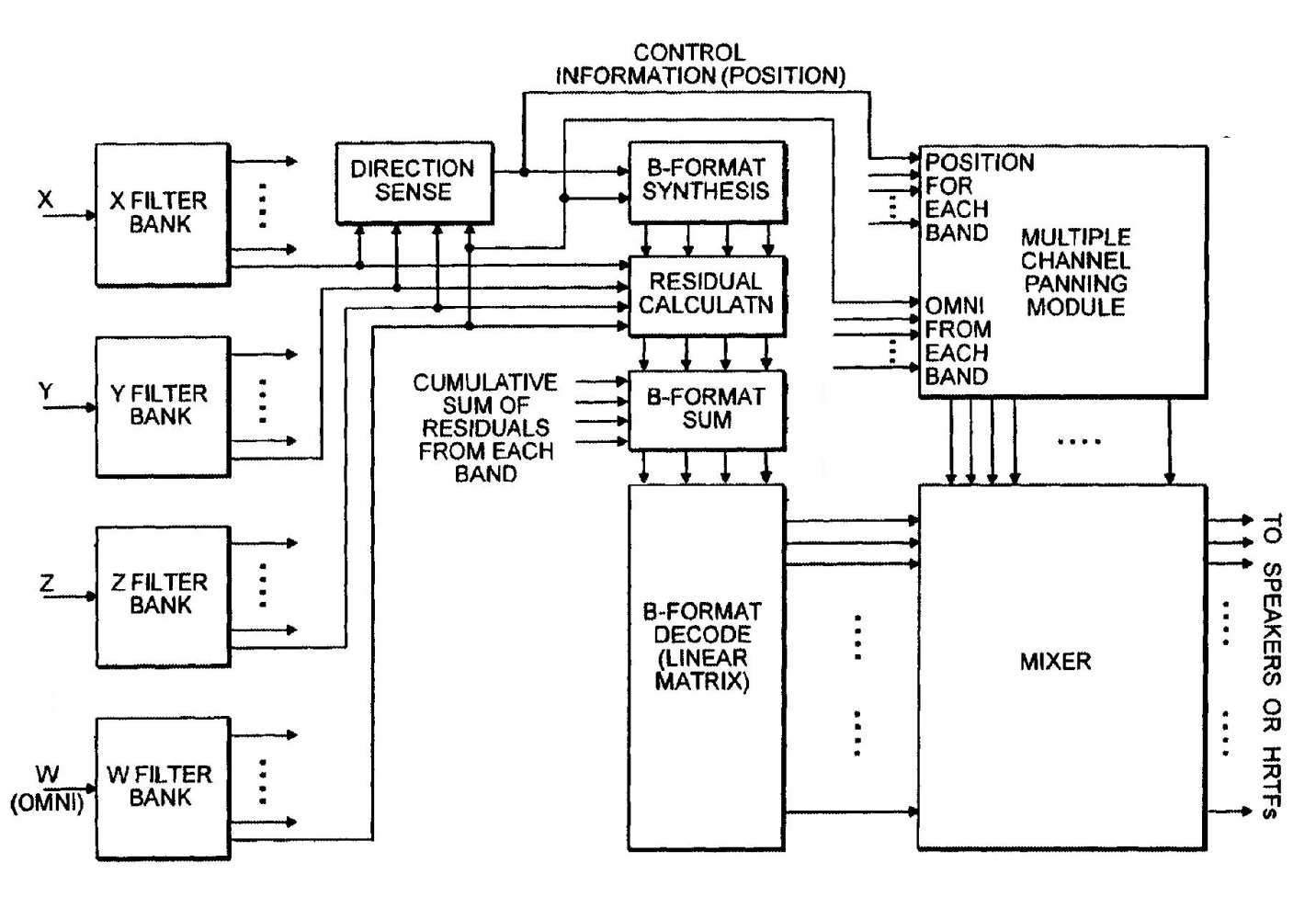
Figure 2.
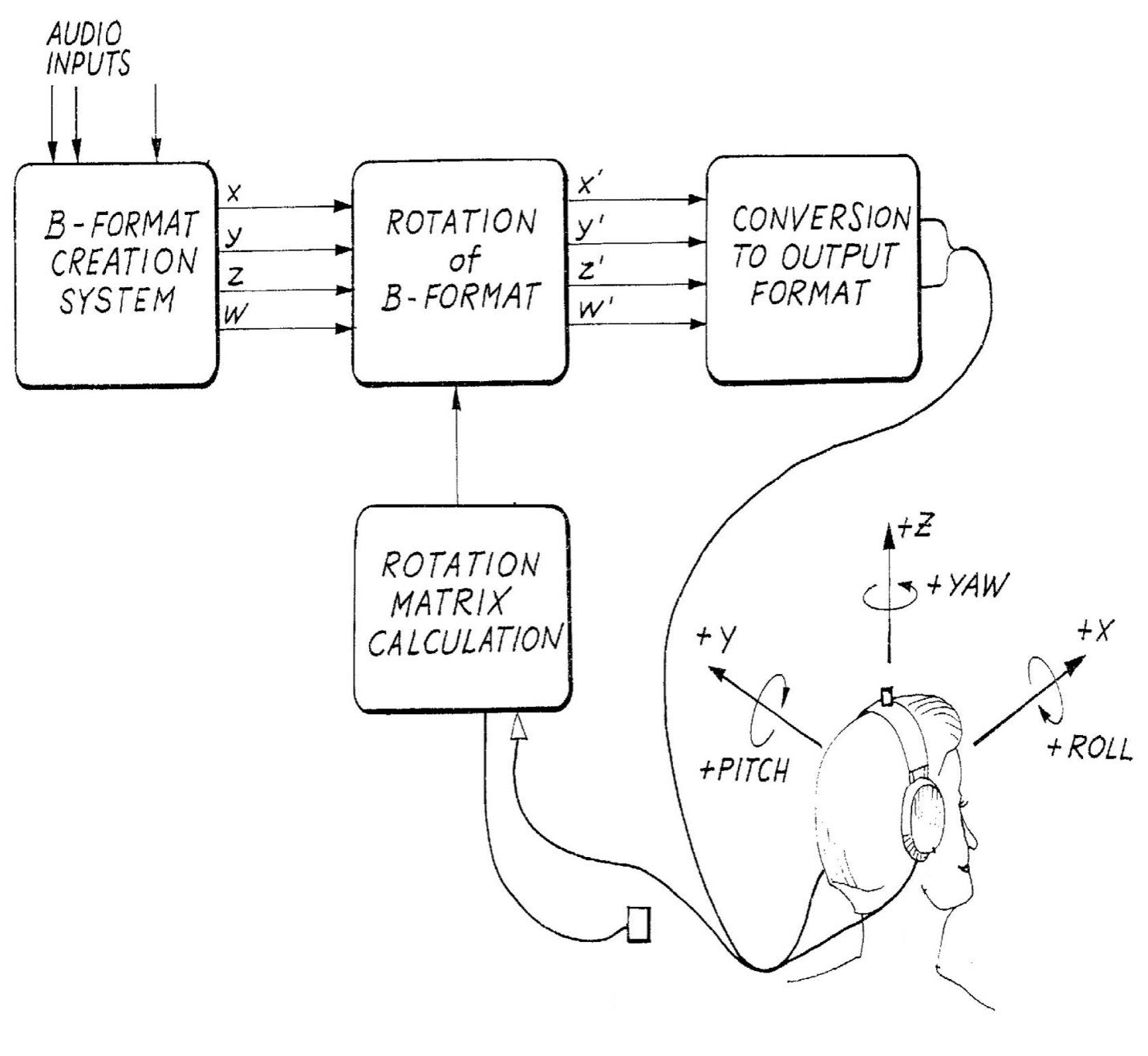
This place covers:
Wave-field synthesis is a spatial audio rendering technique based on the Huygens–Fresnel principle, which states that any wave front can be regarded as a superposition of elementary spherical waves.
For example:
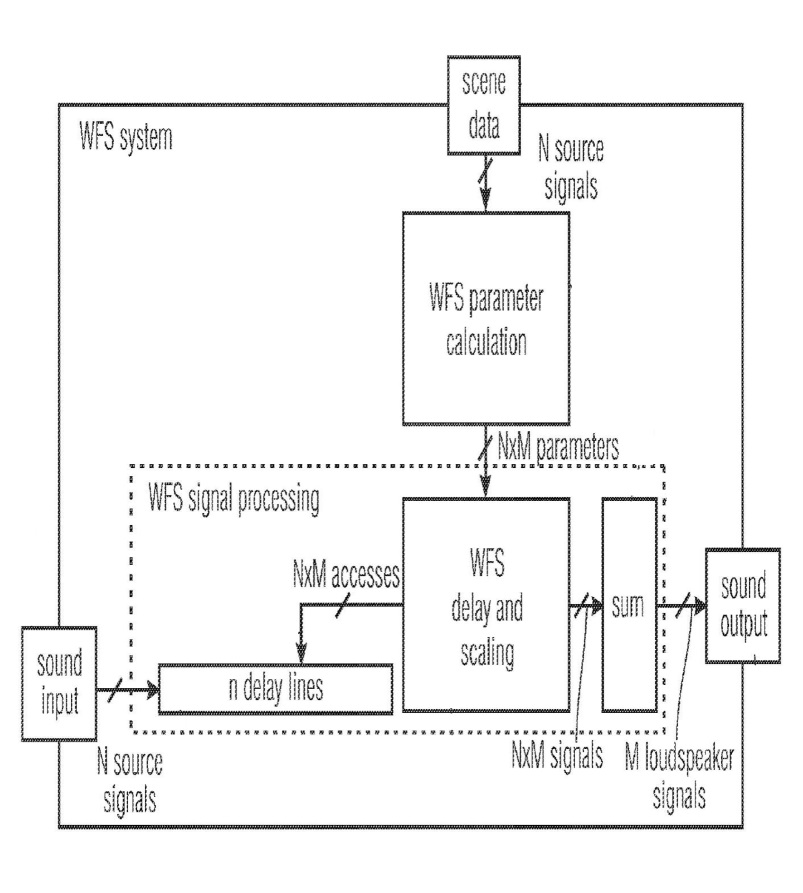
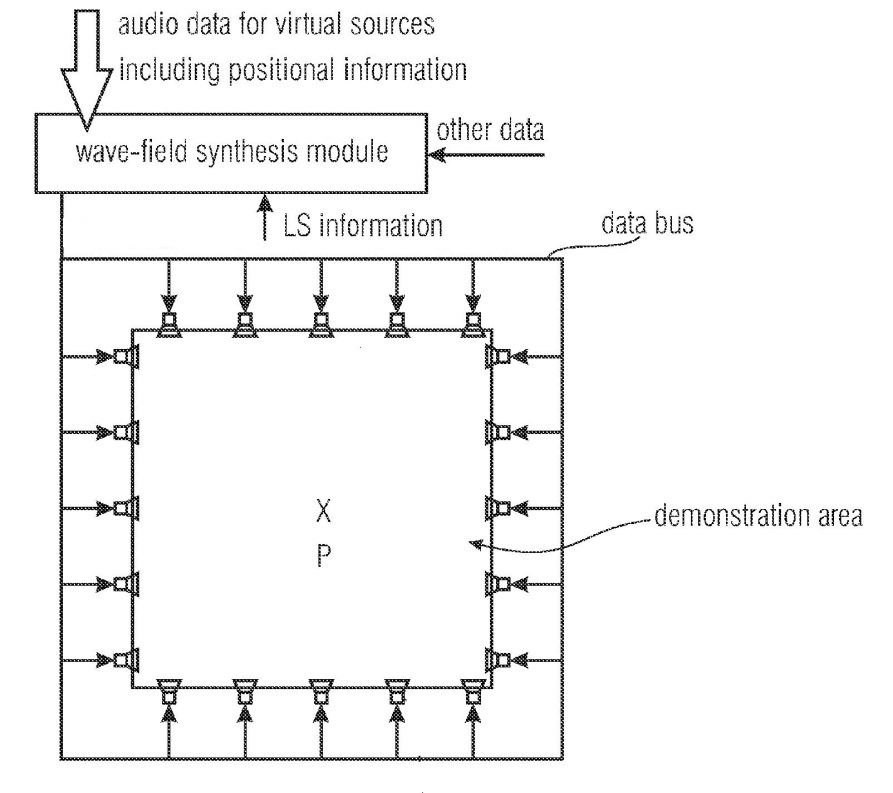
In this place, the following terms or expressions are used with the meaning indicated:
Control systems | encompasses adaptive systems |